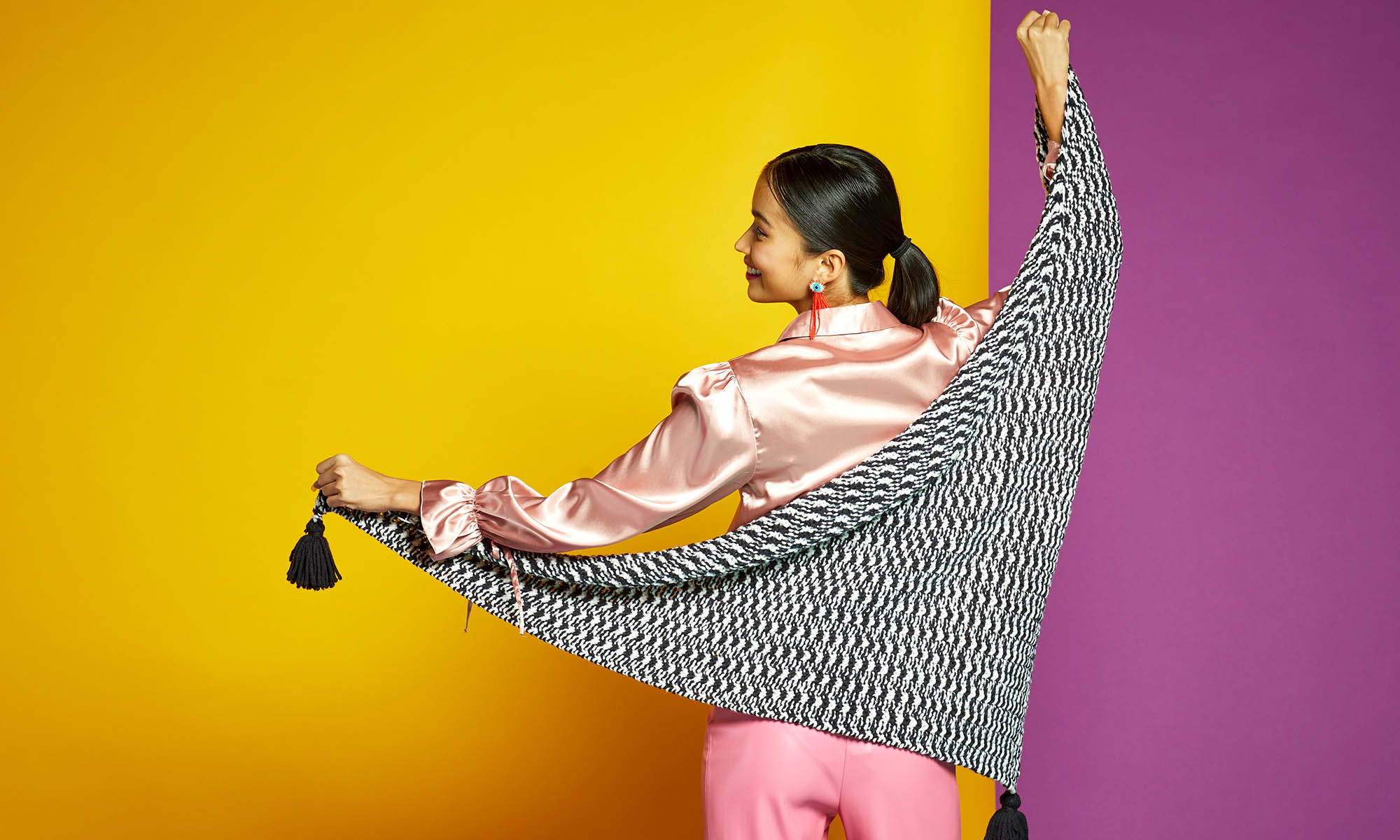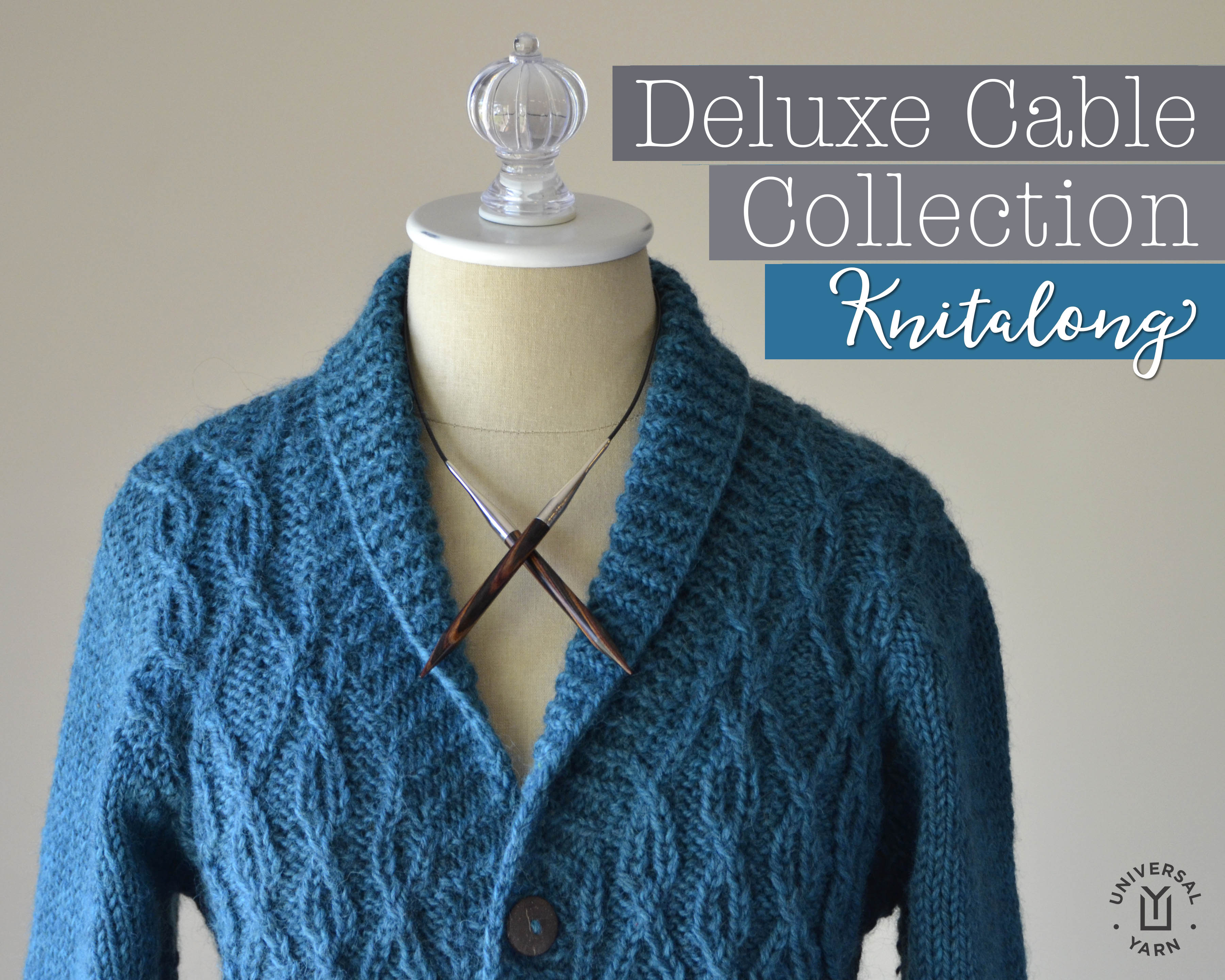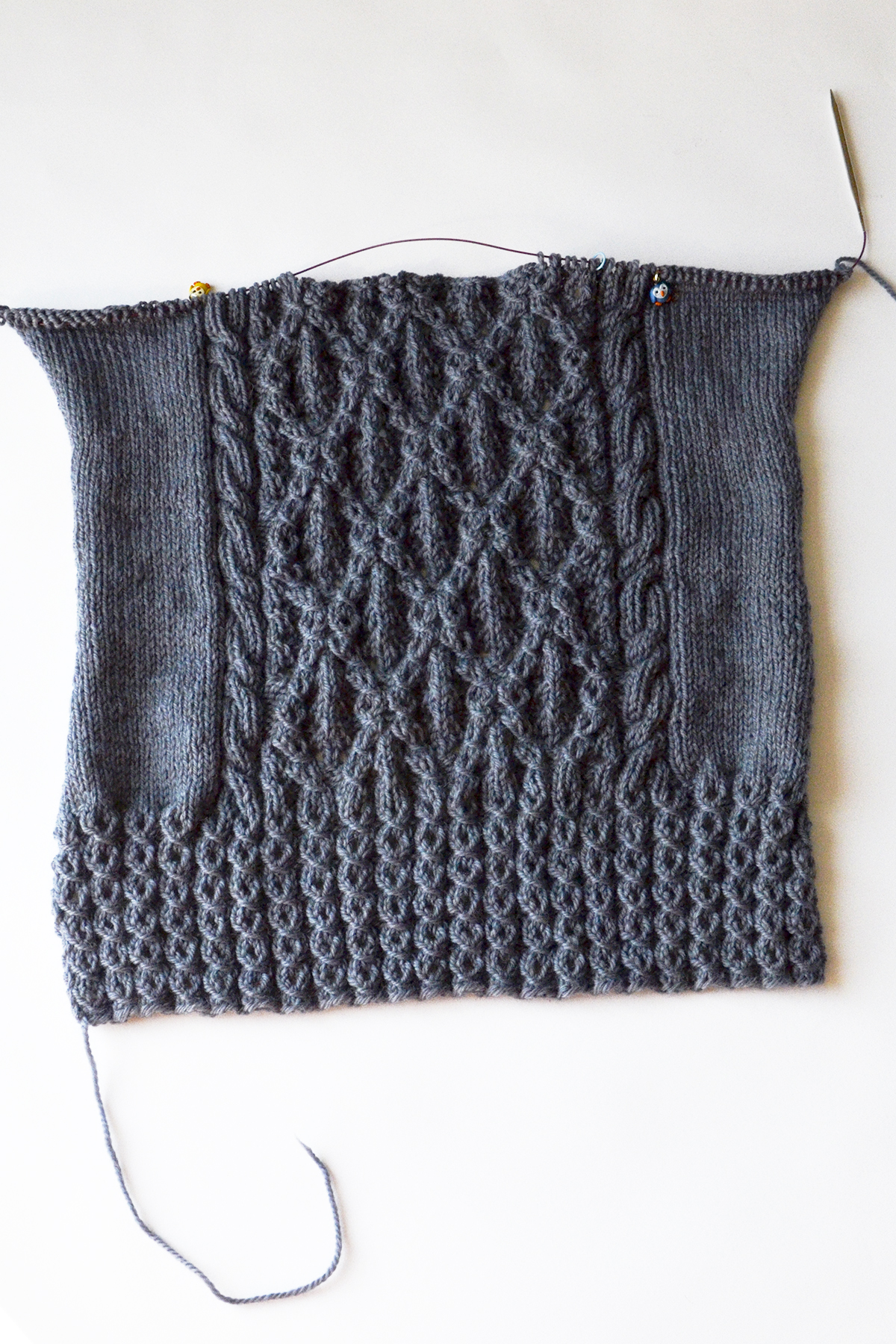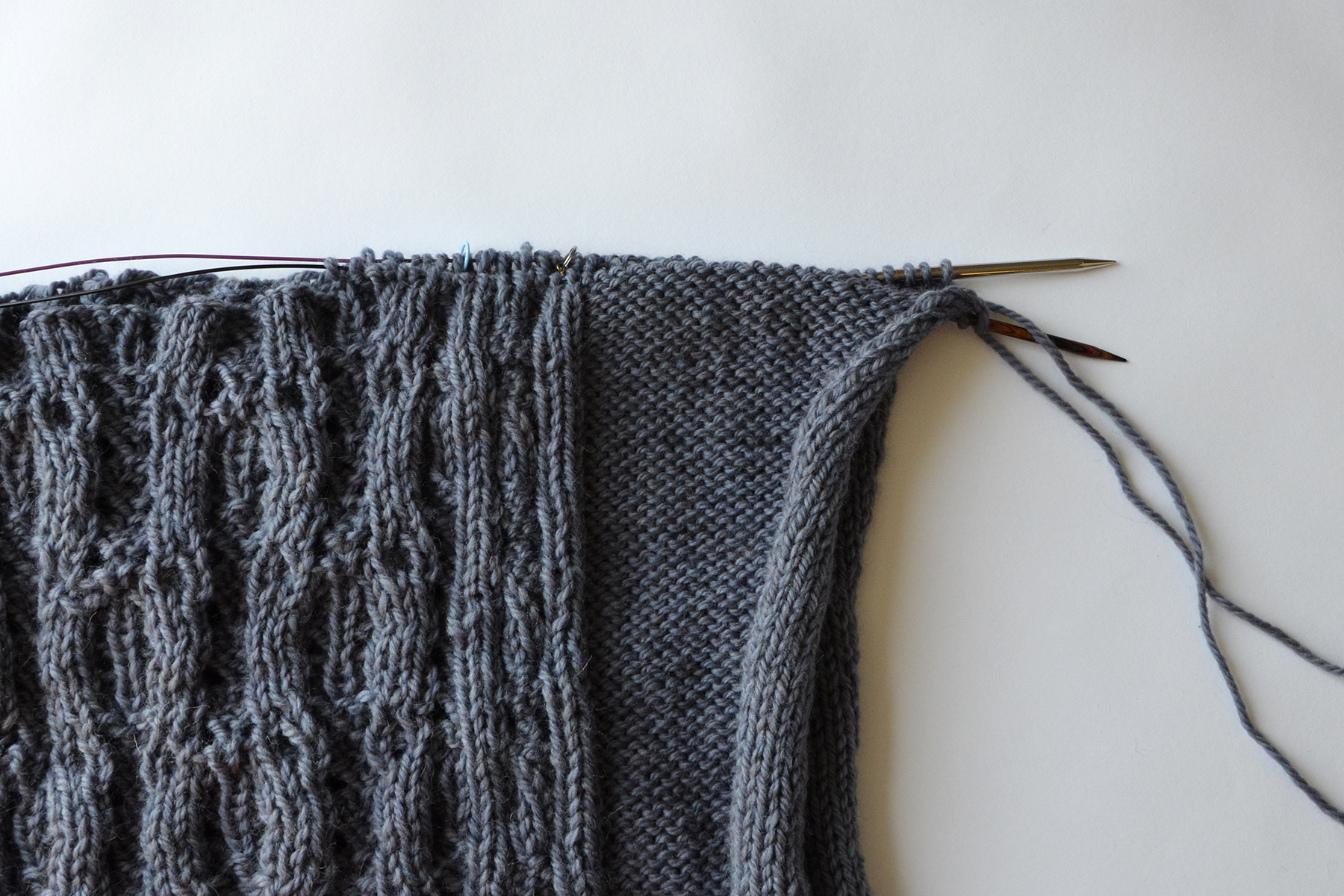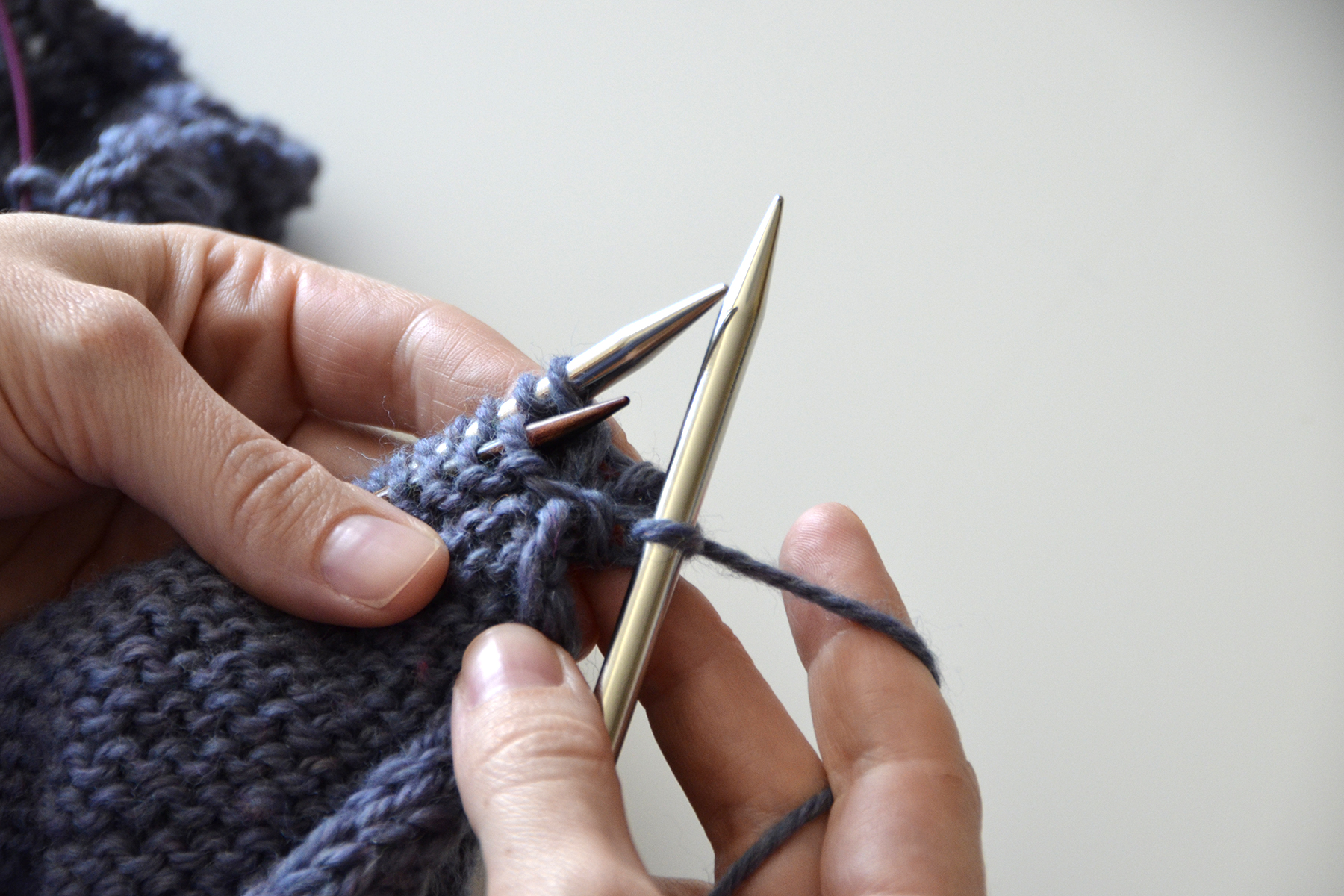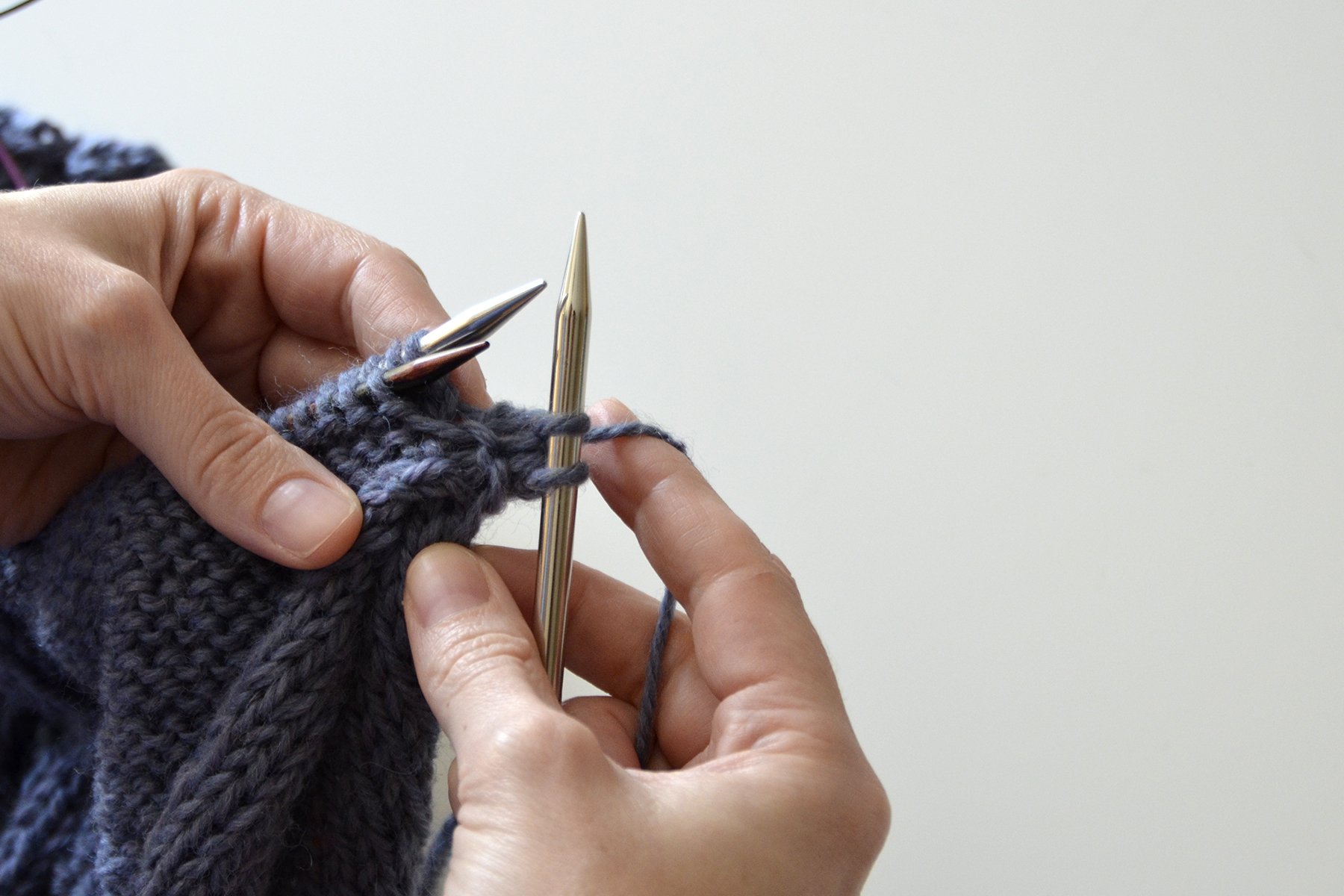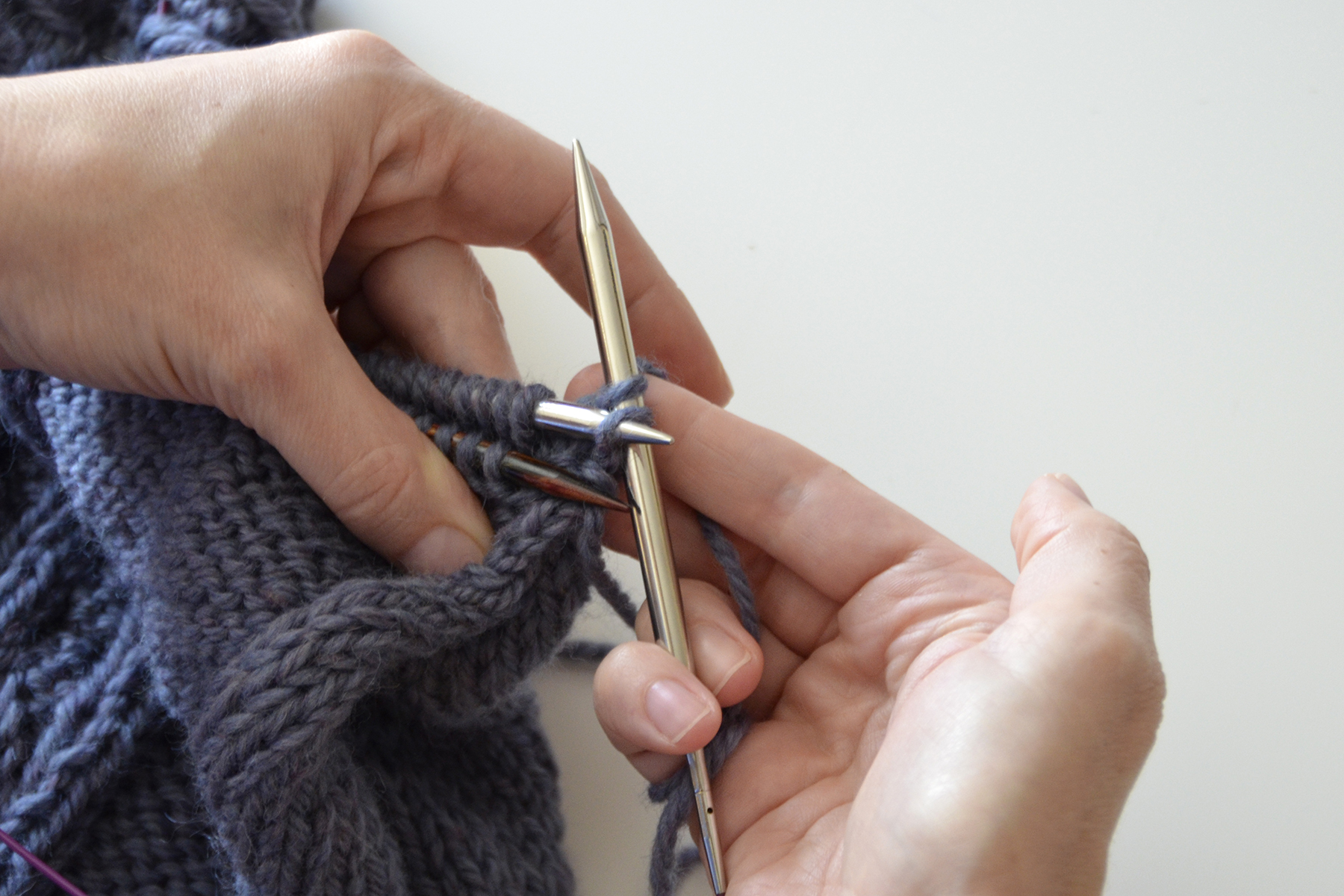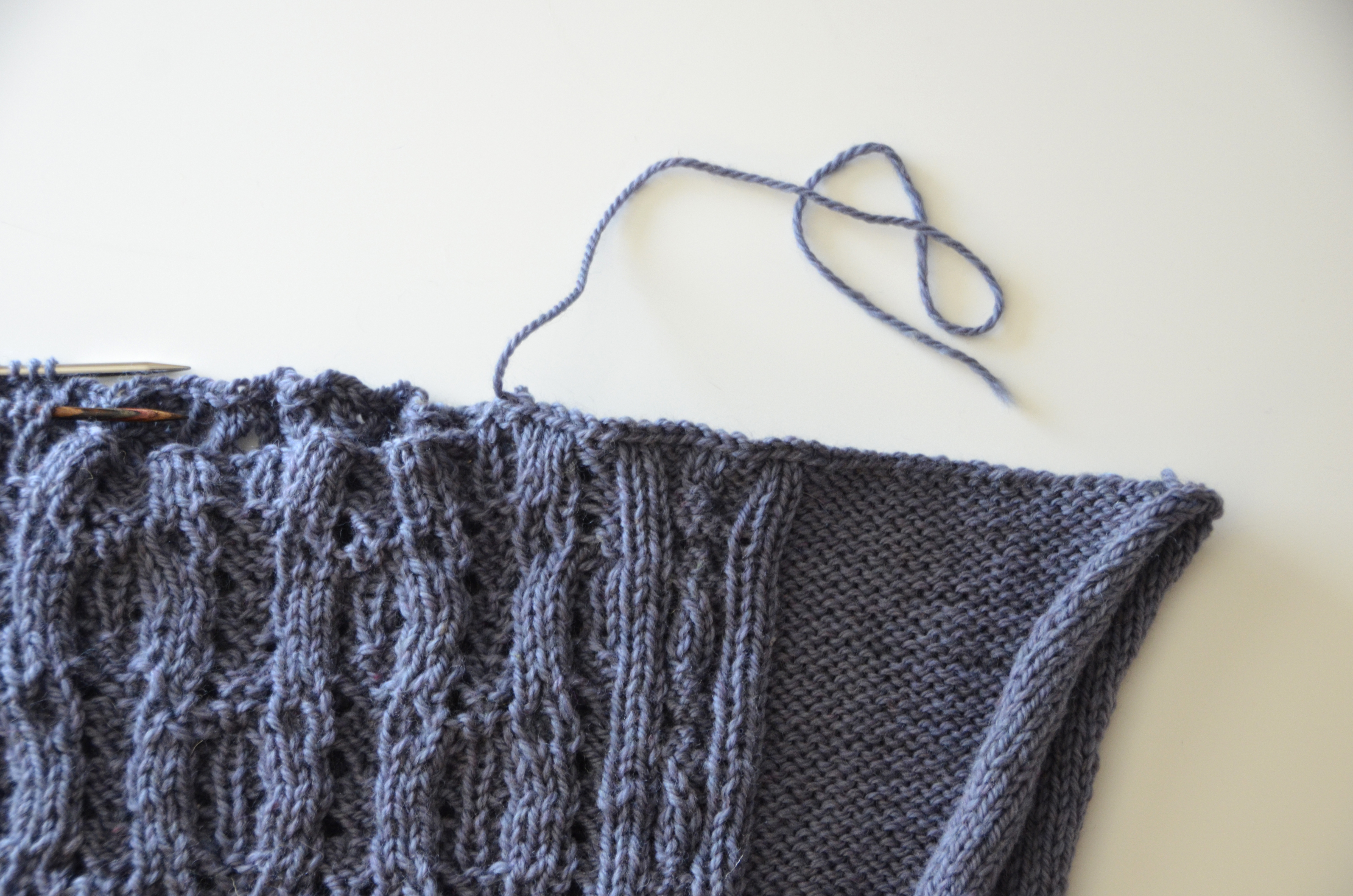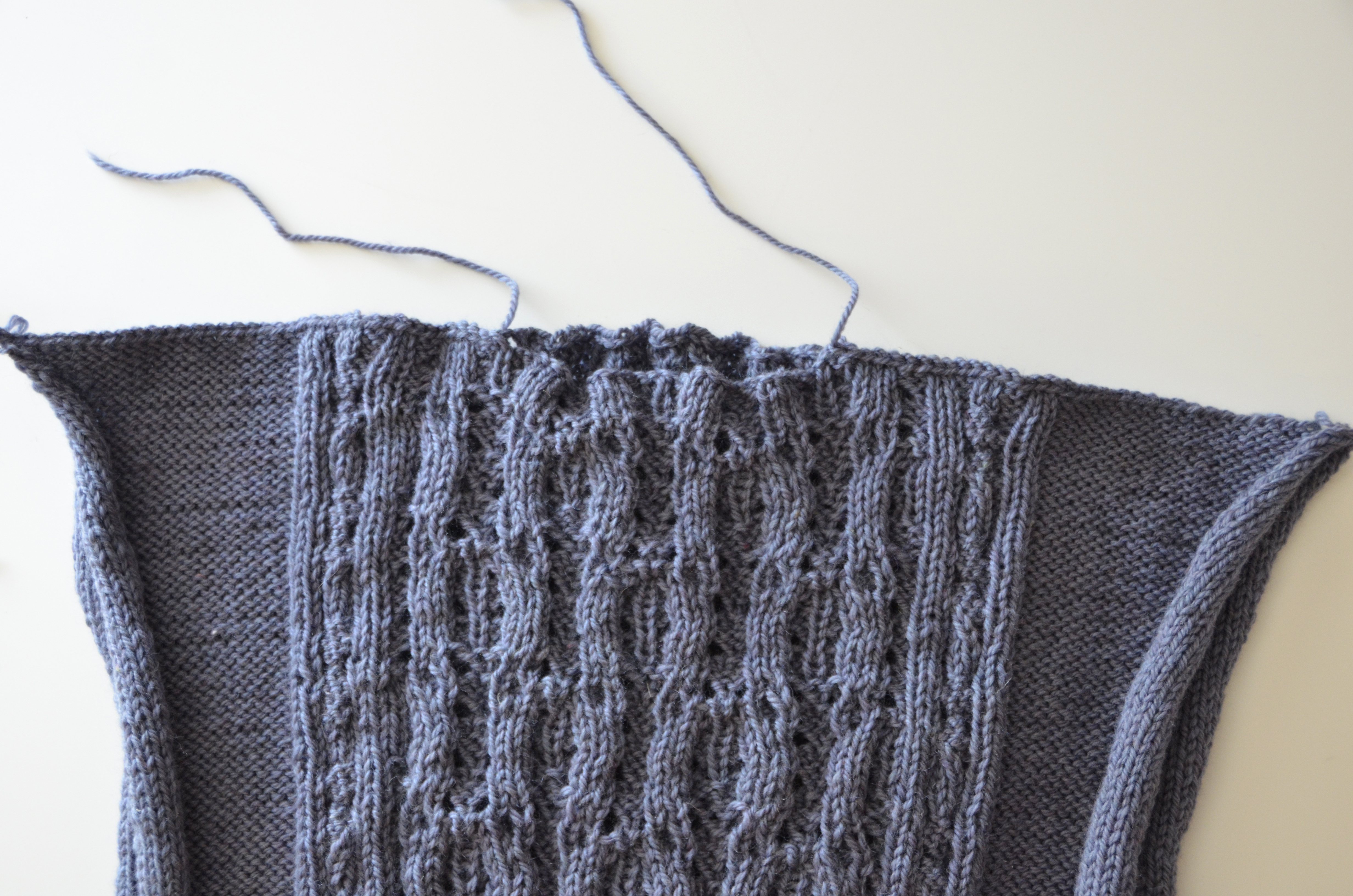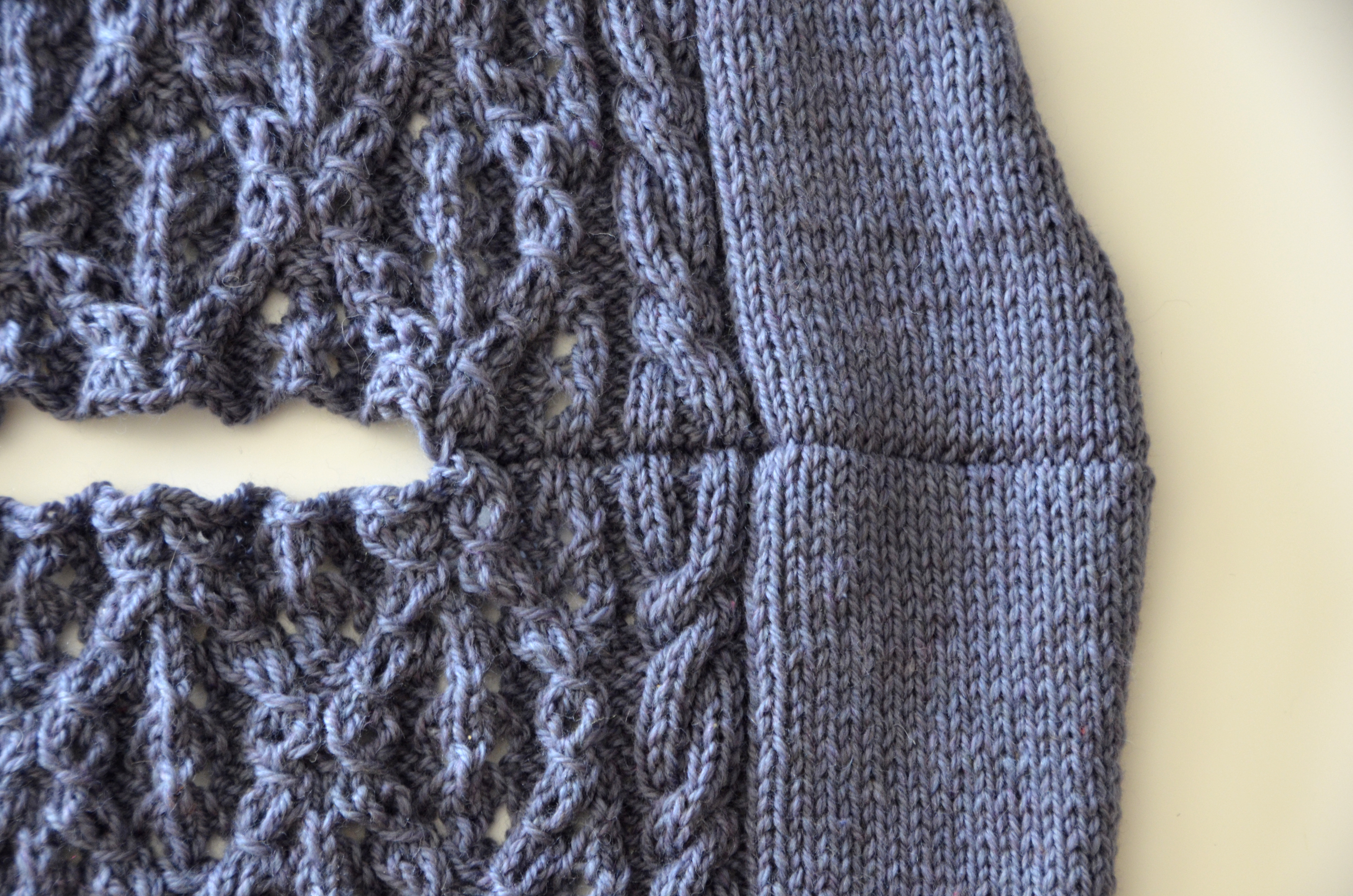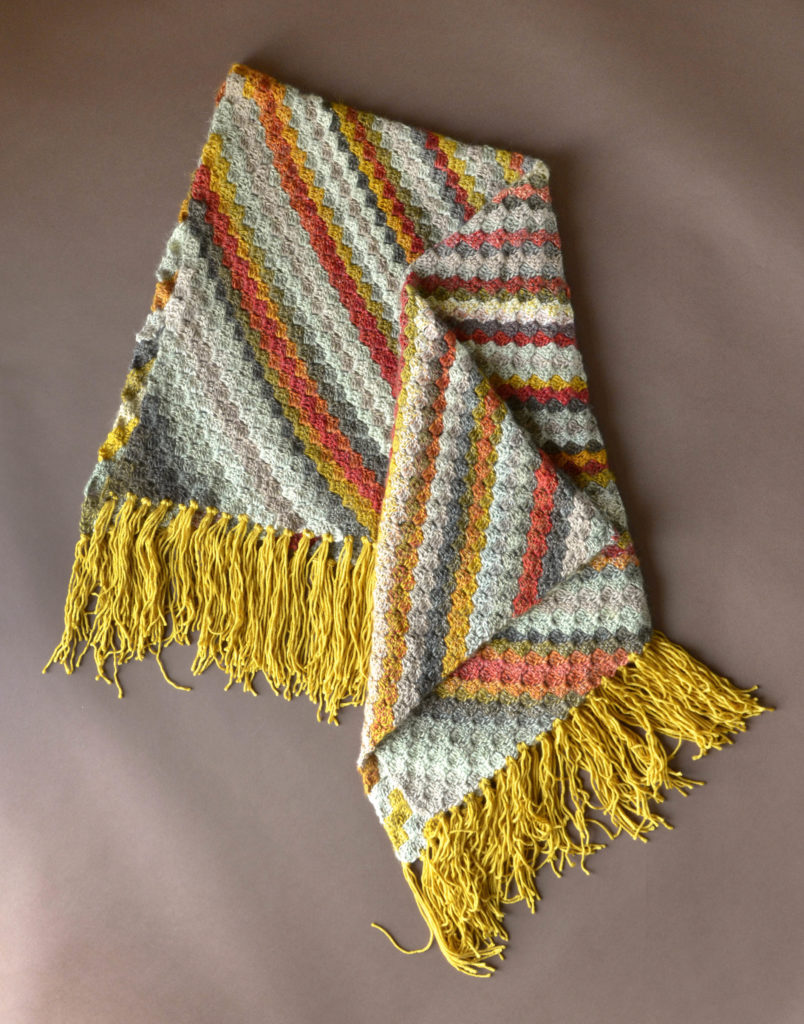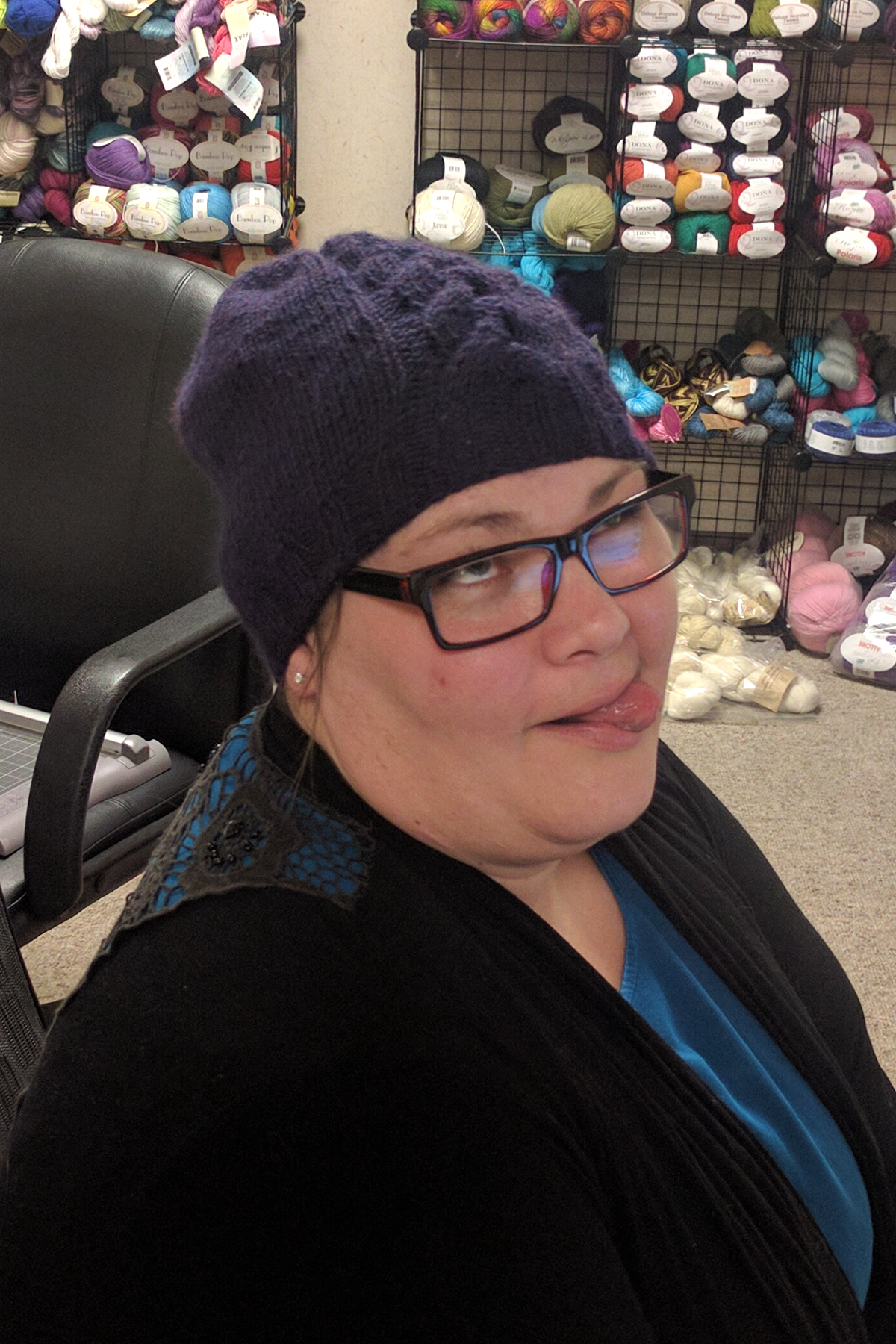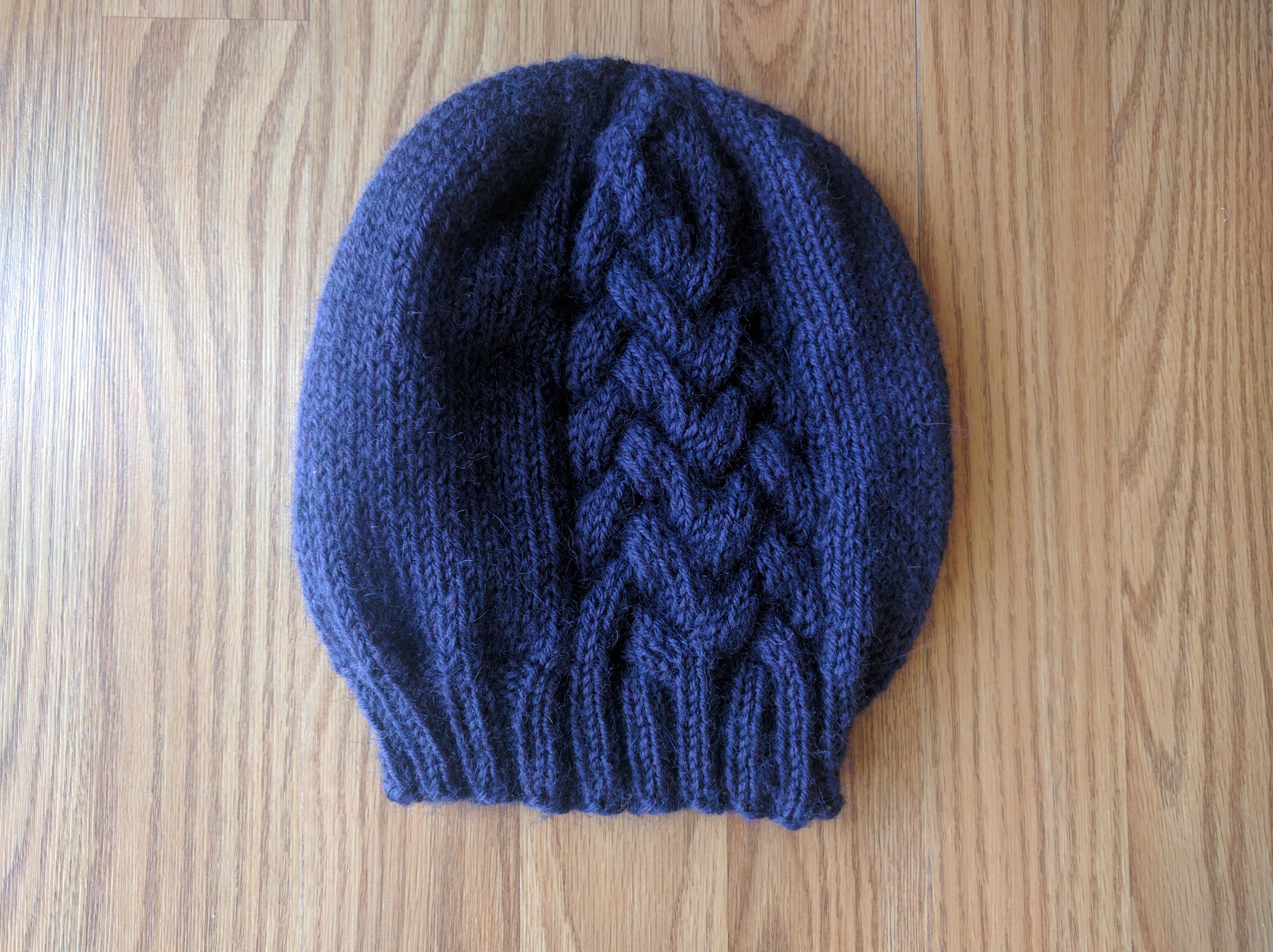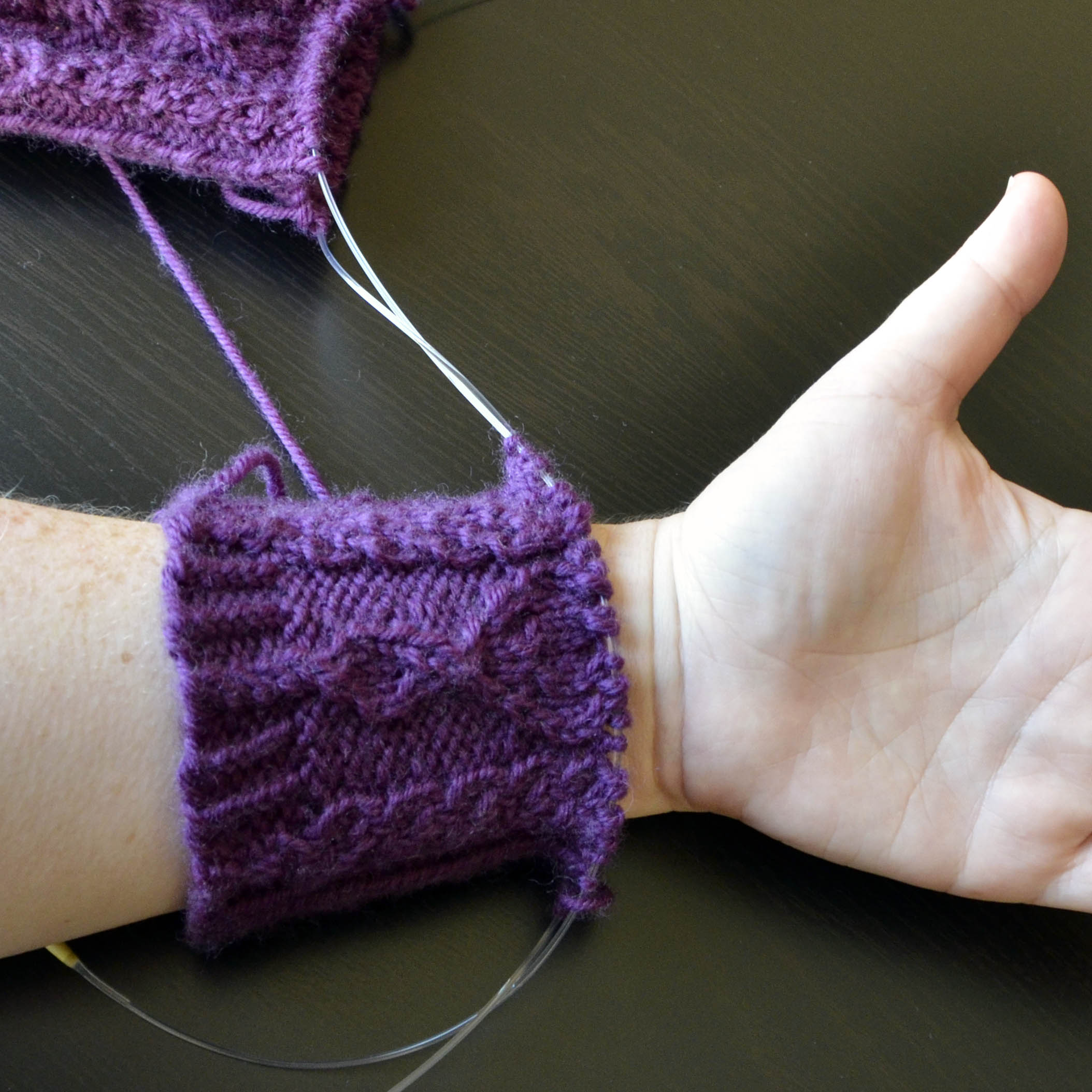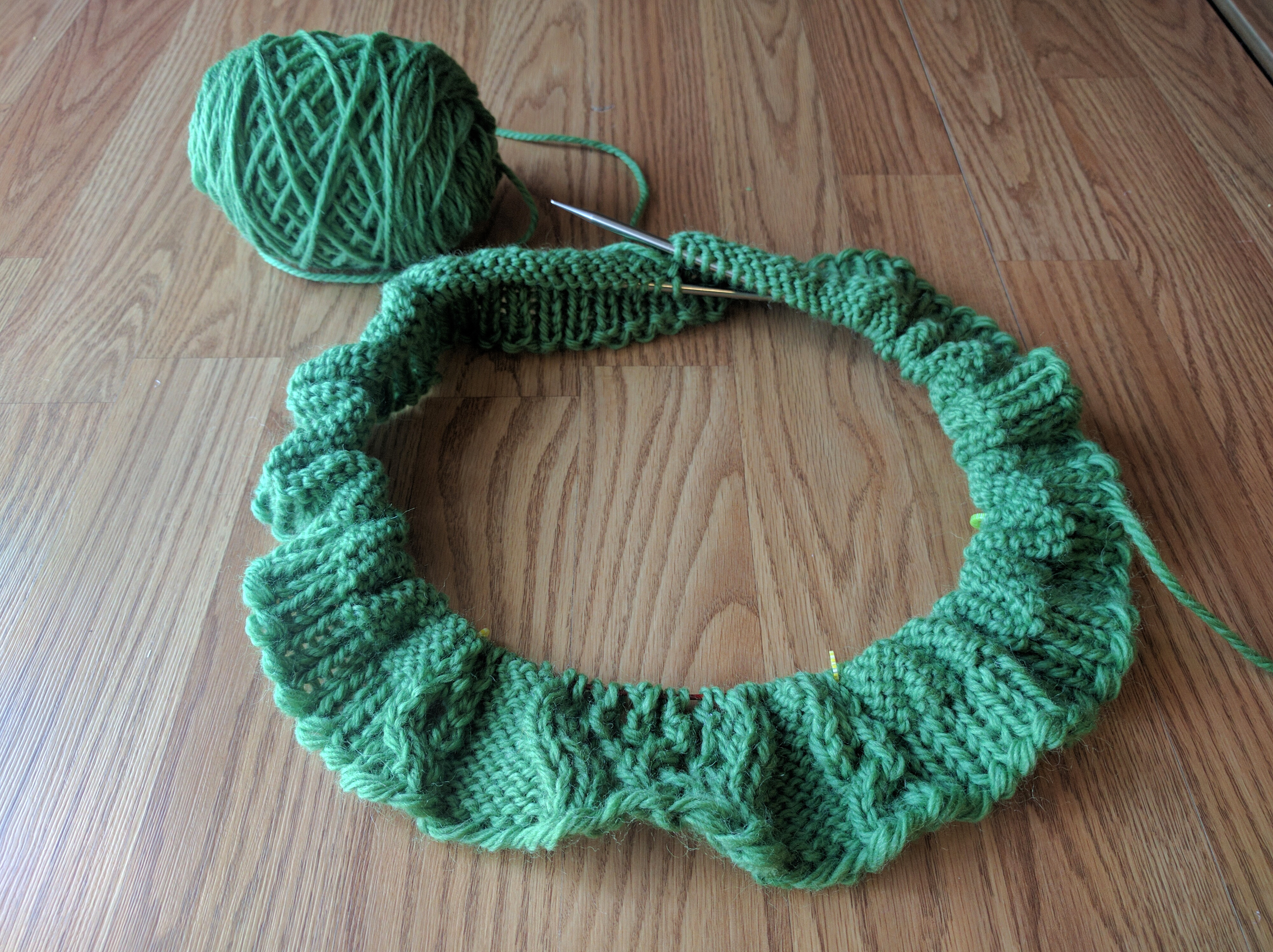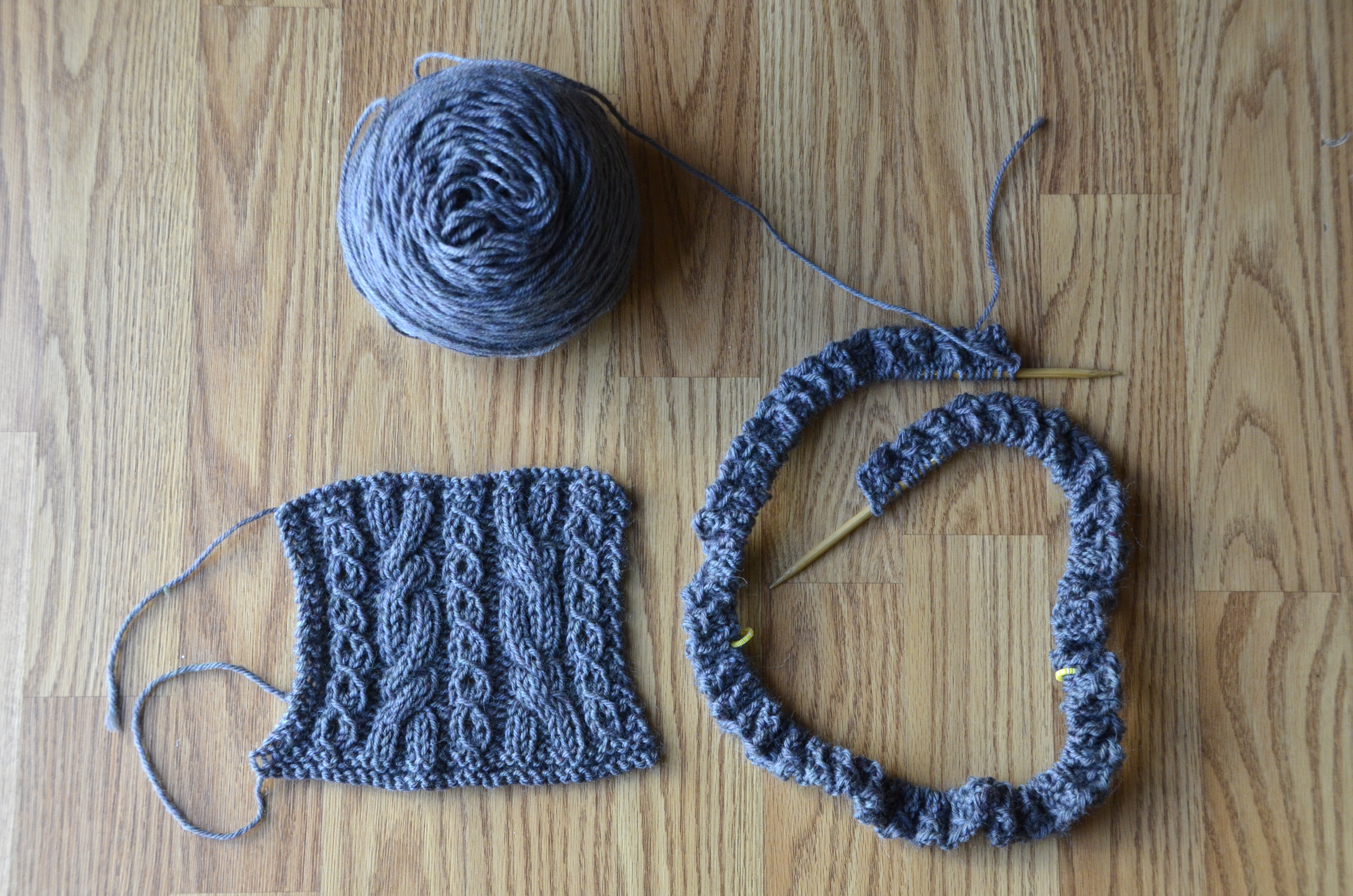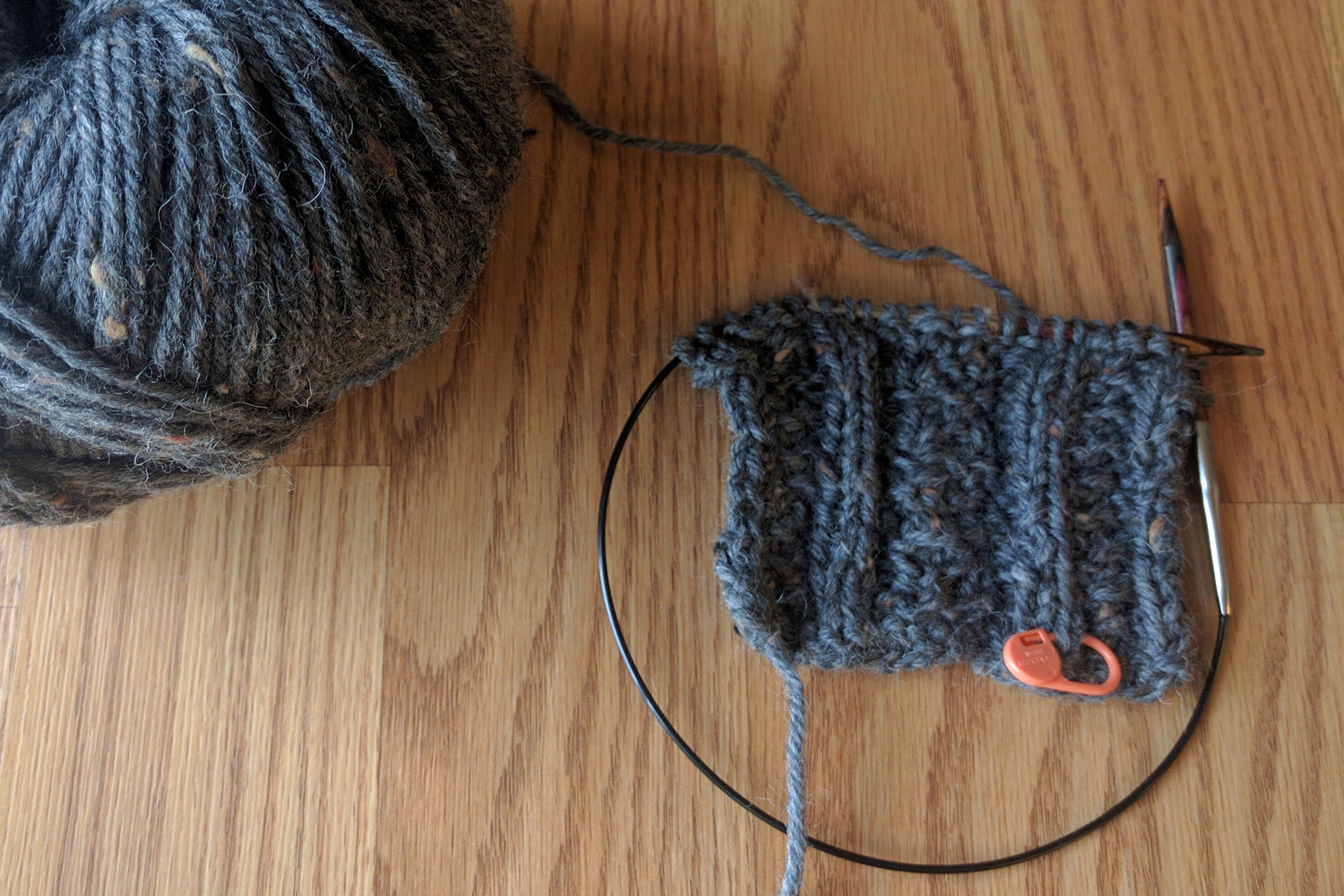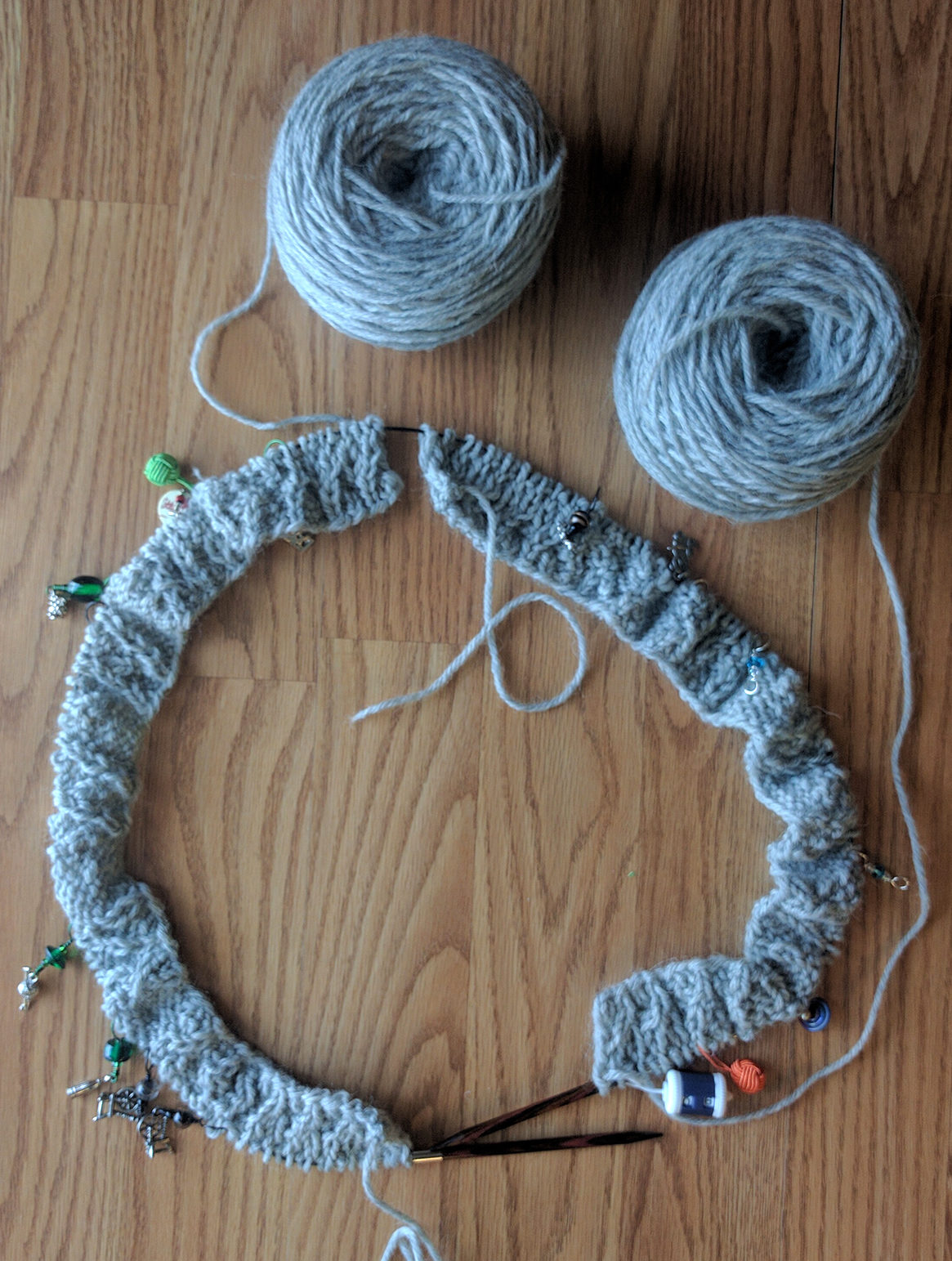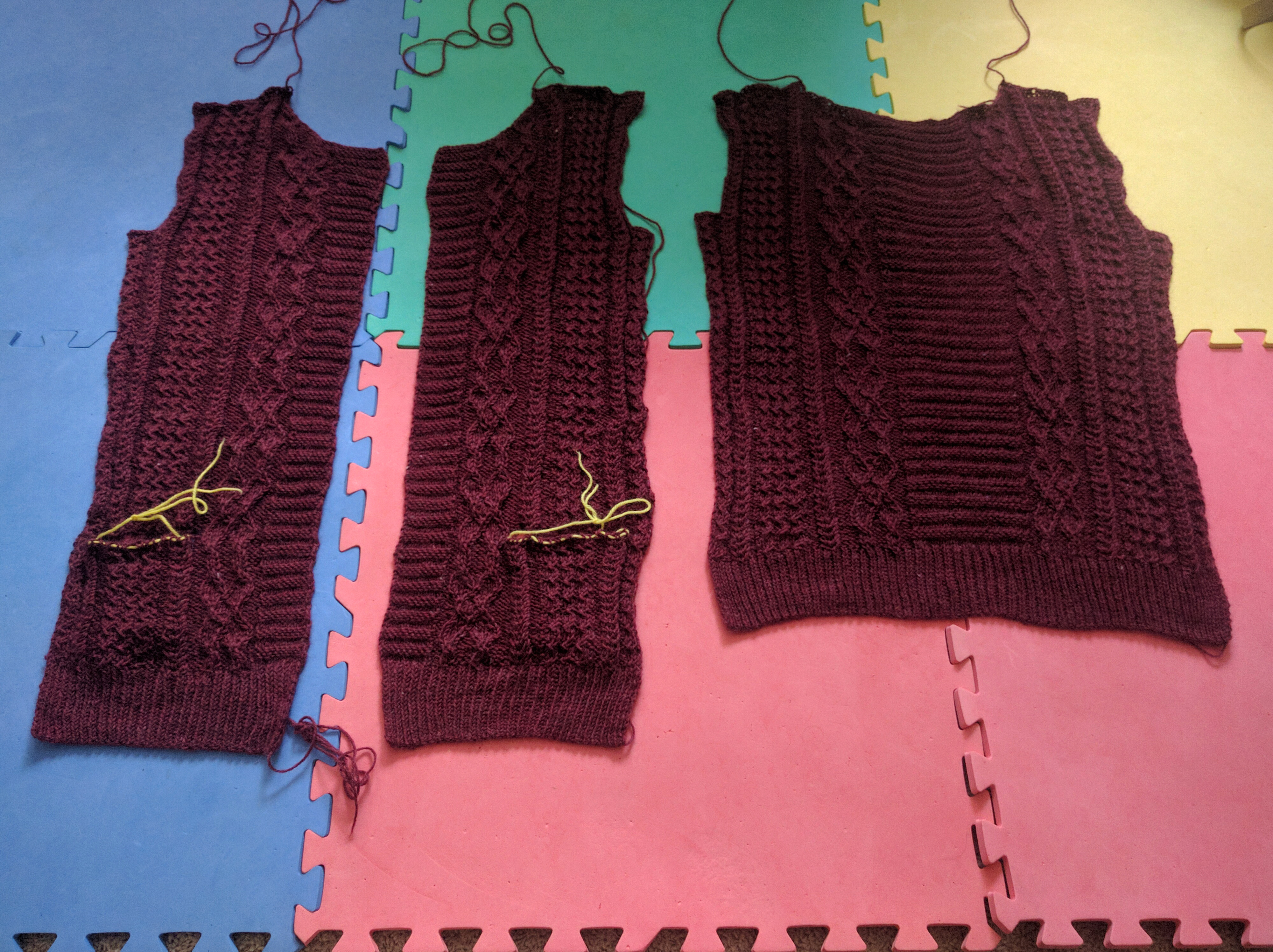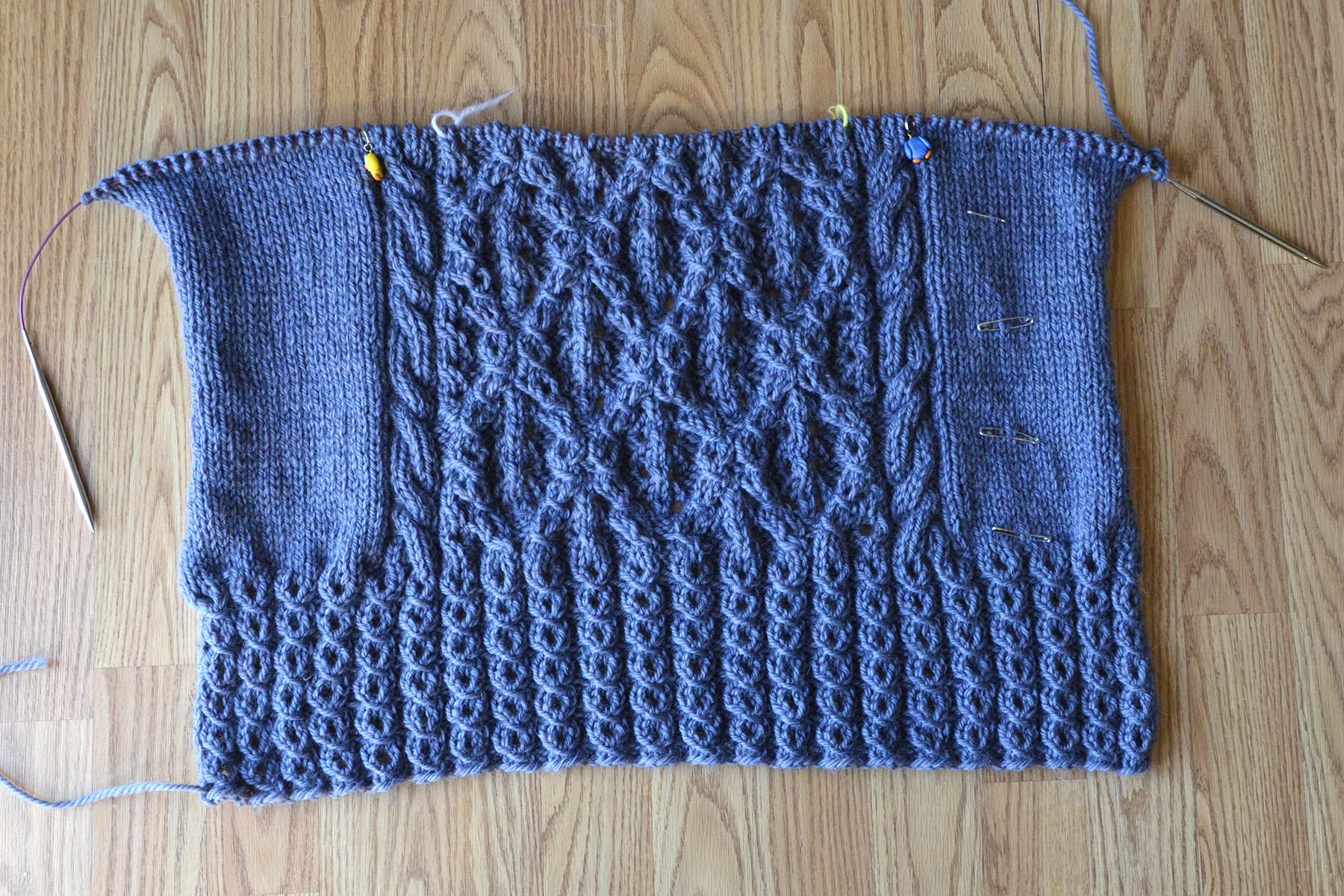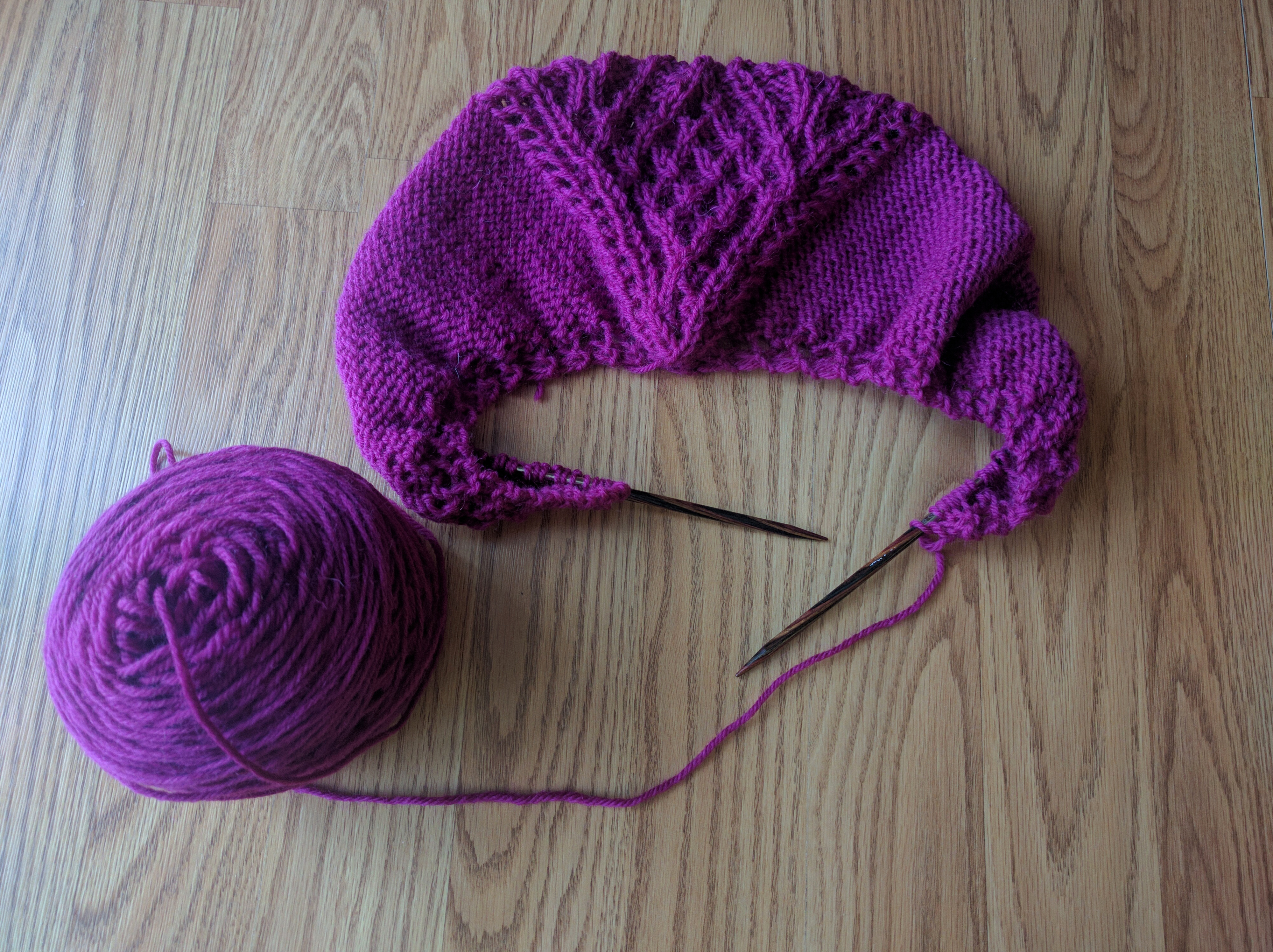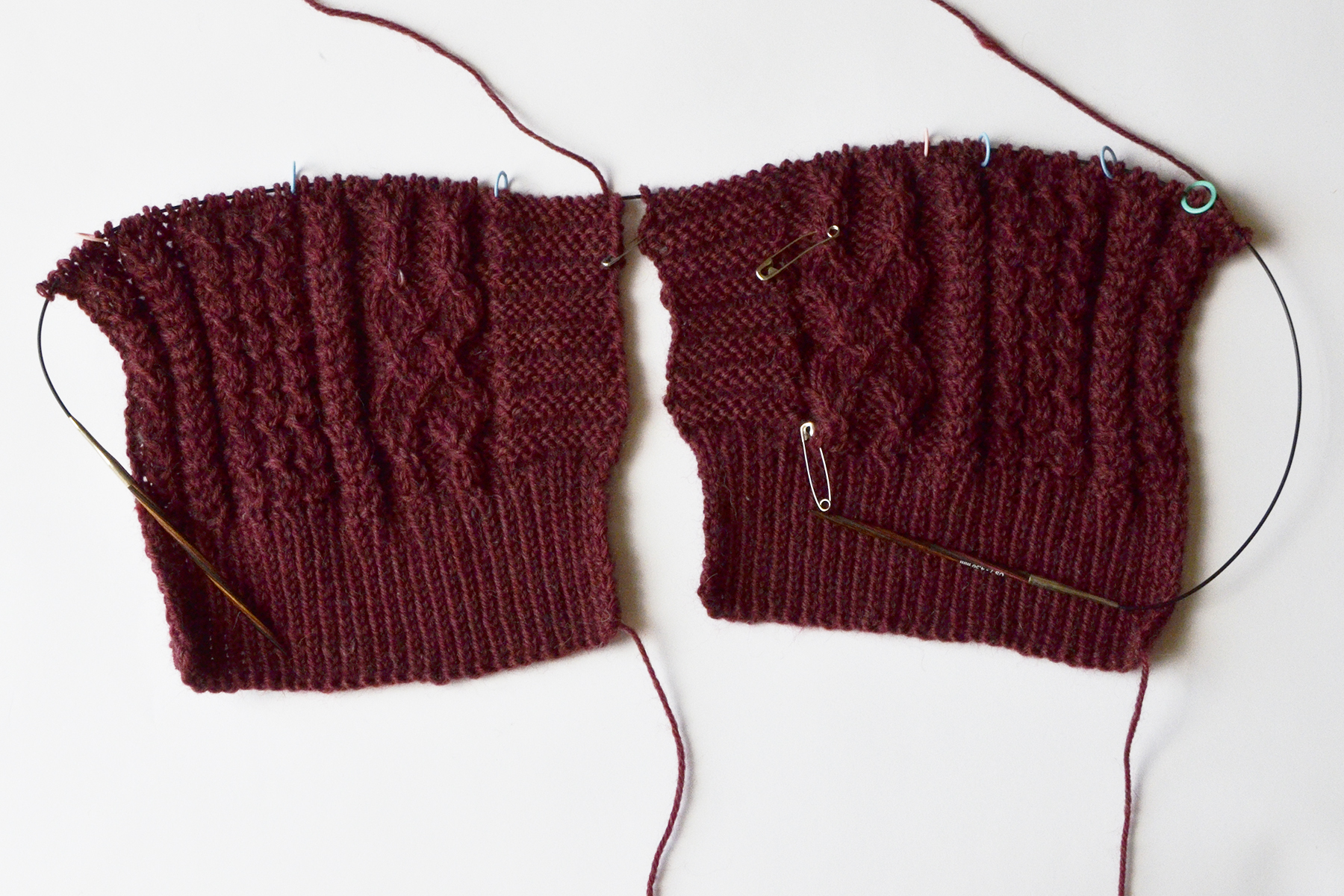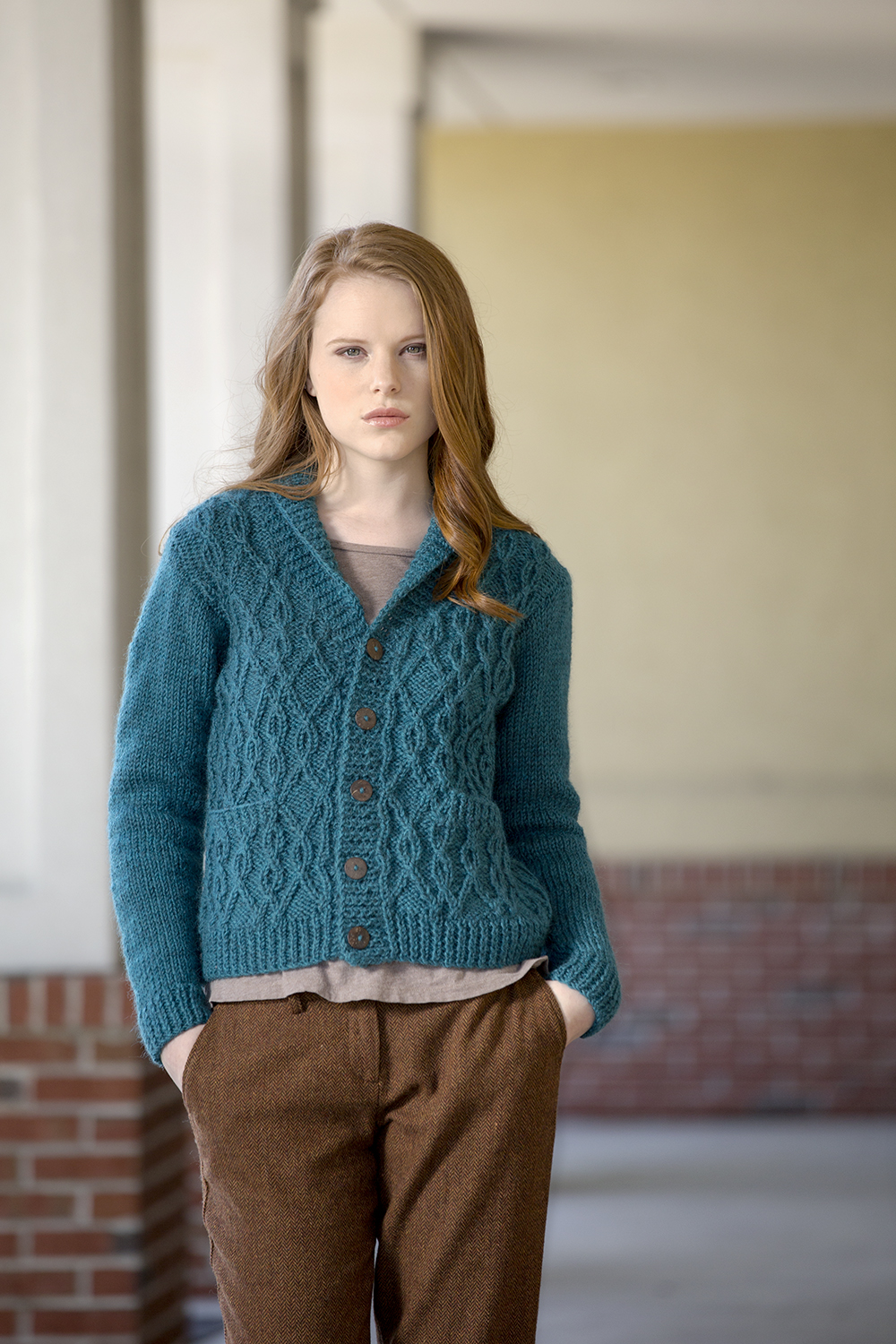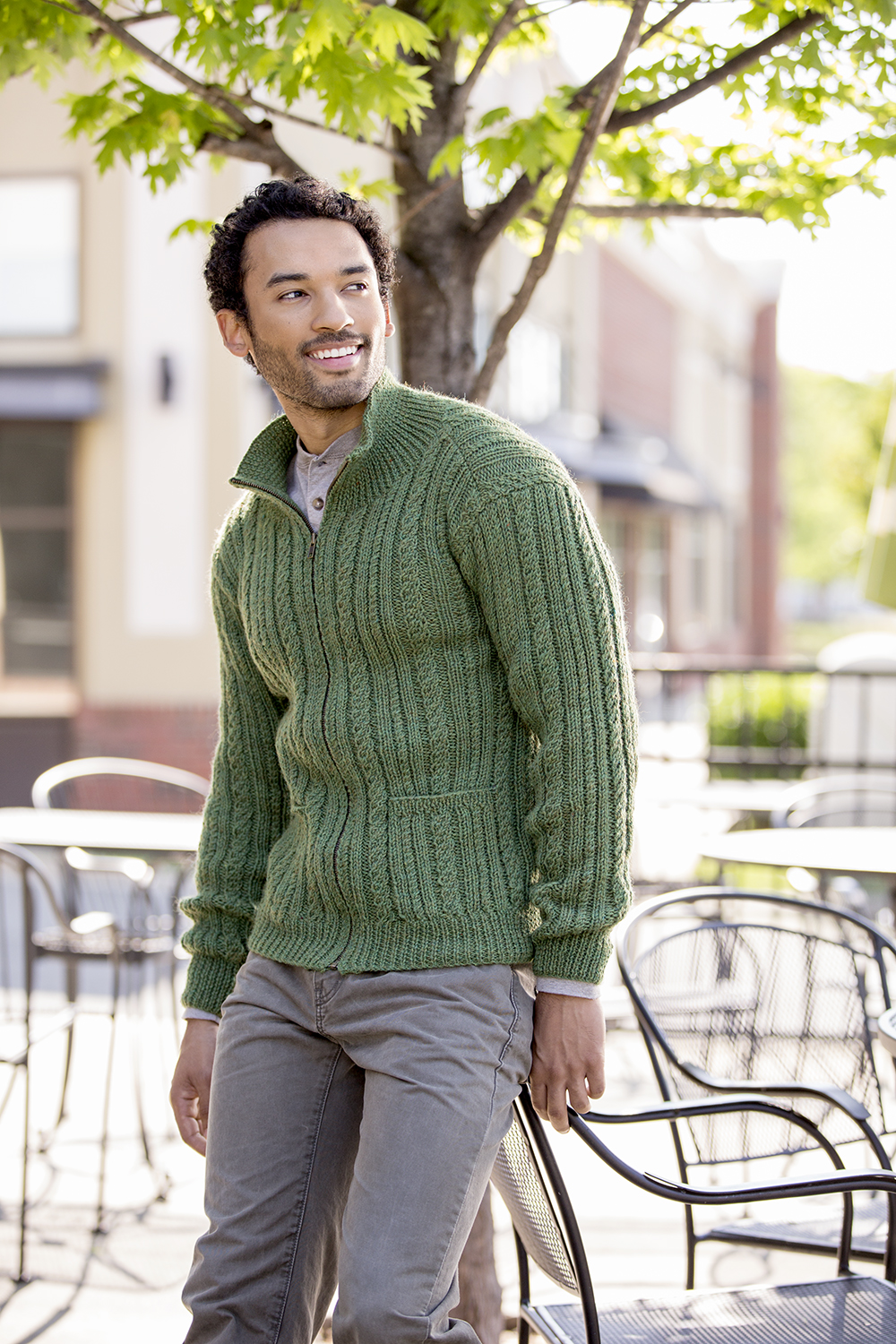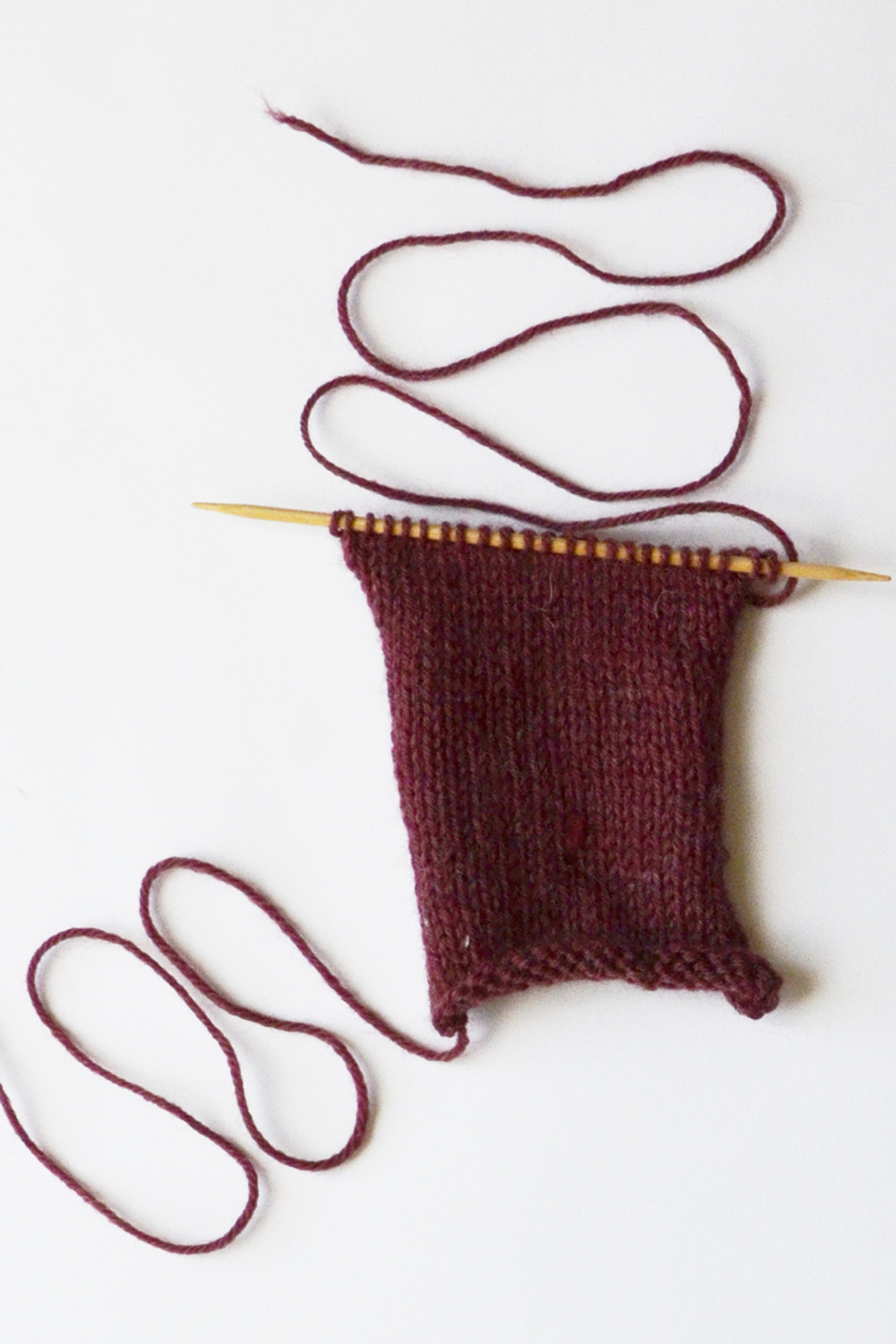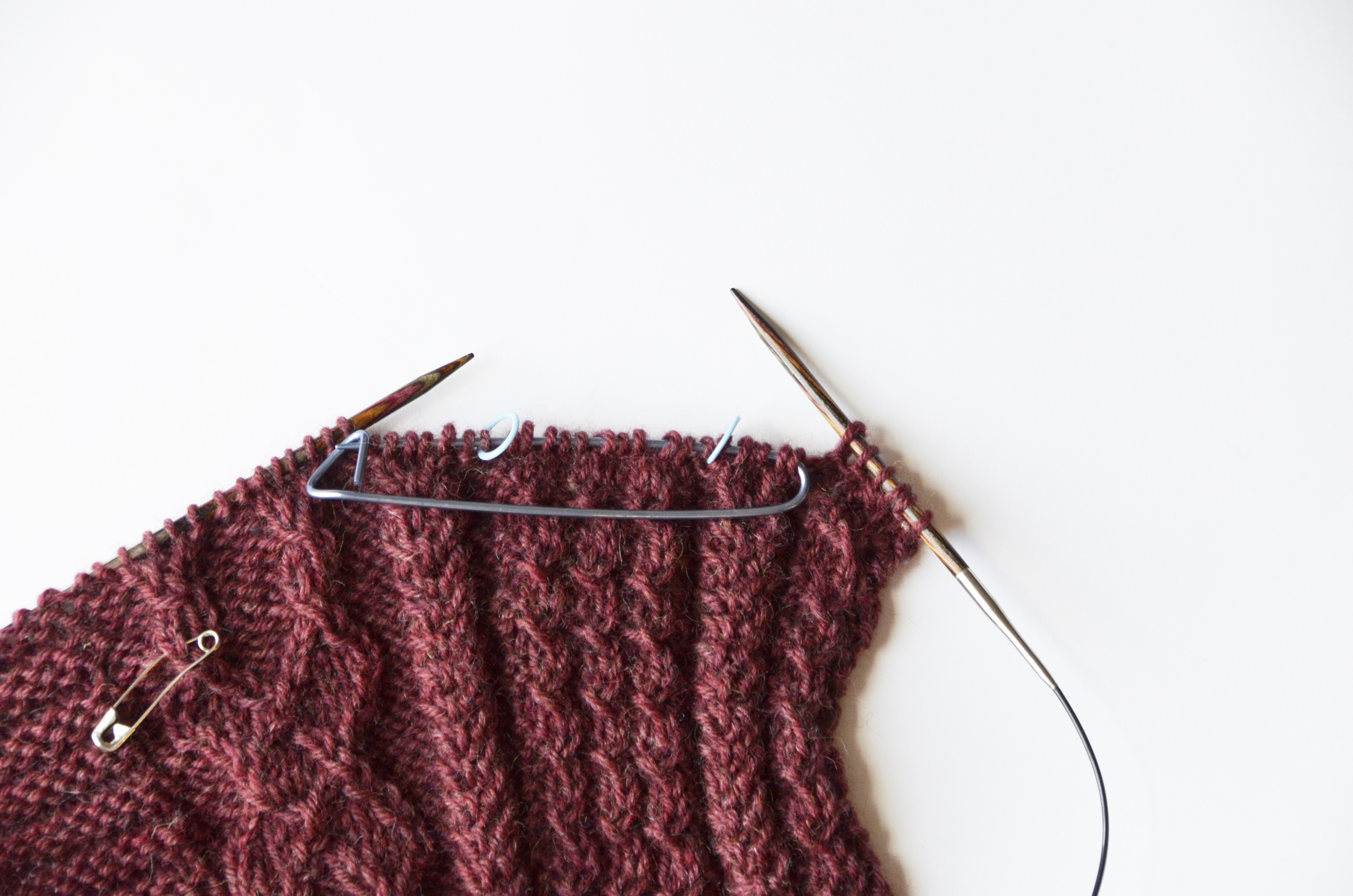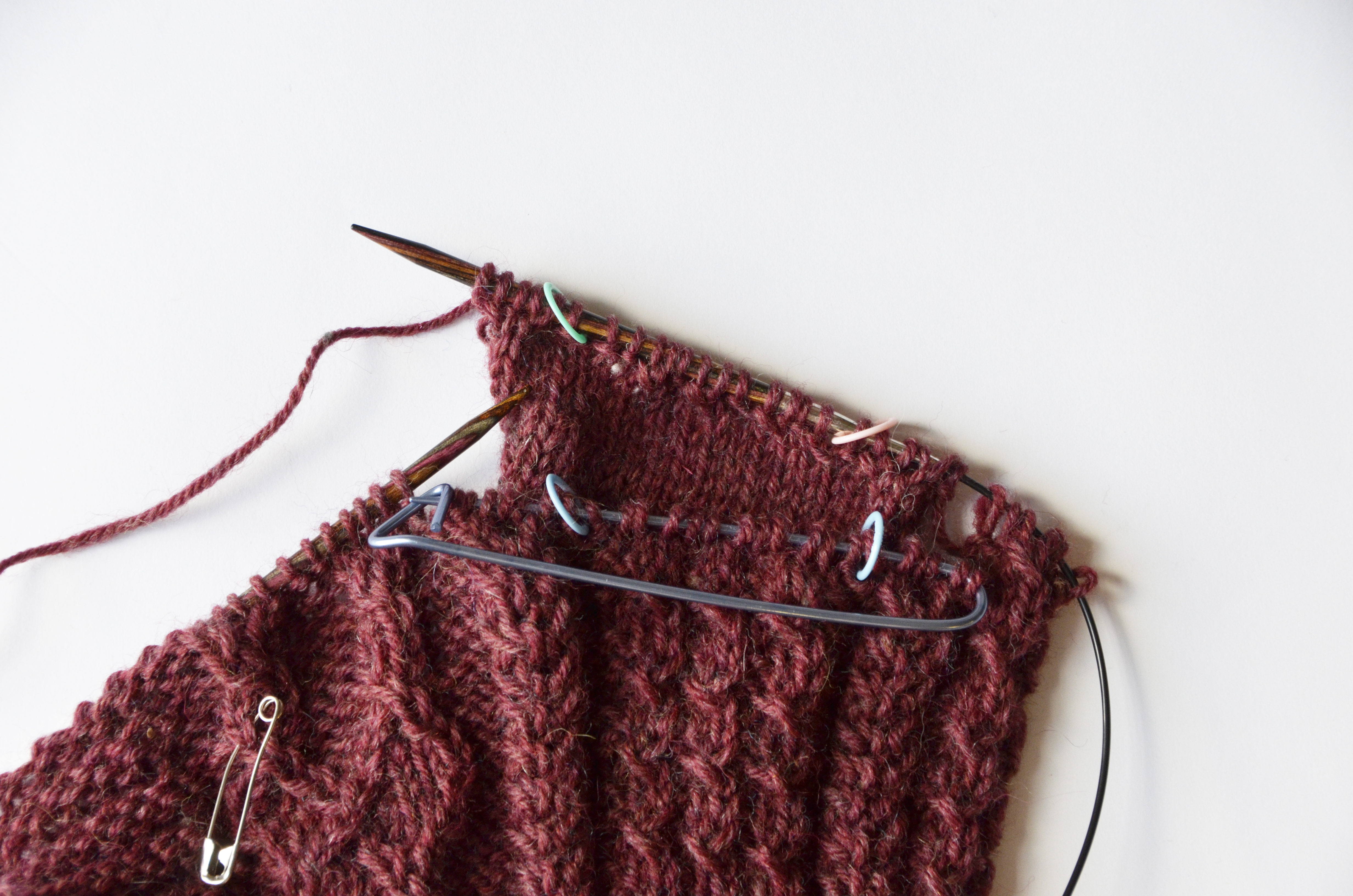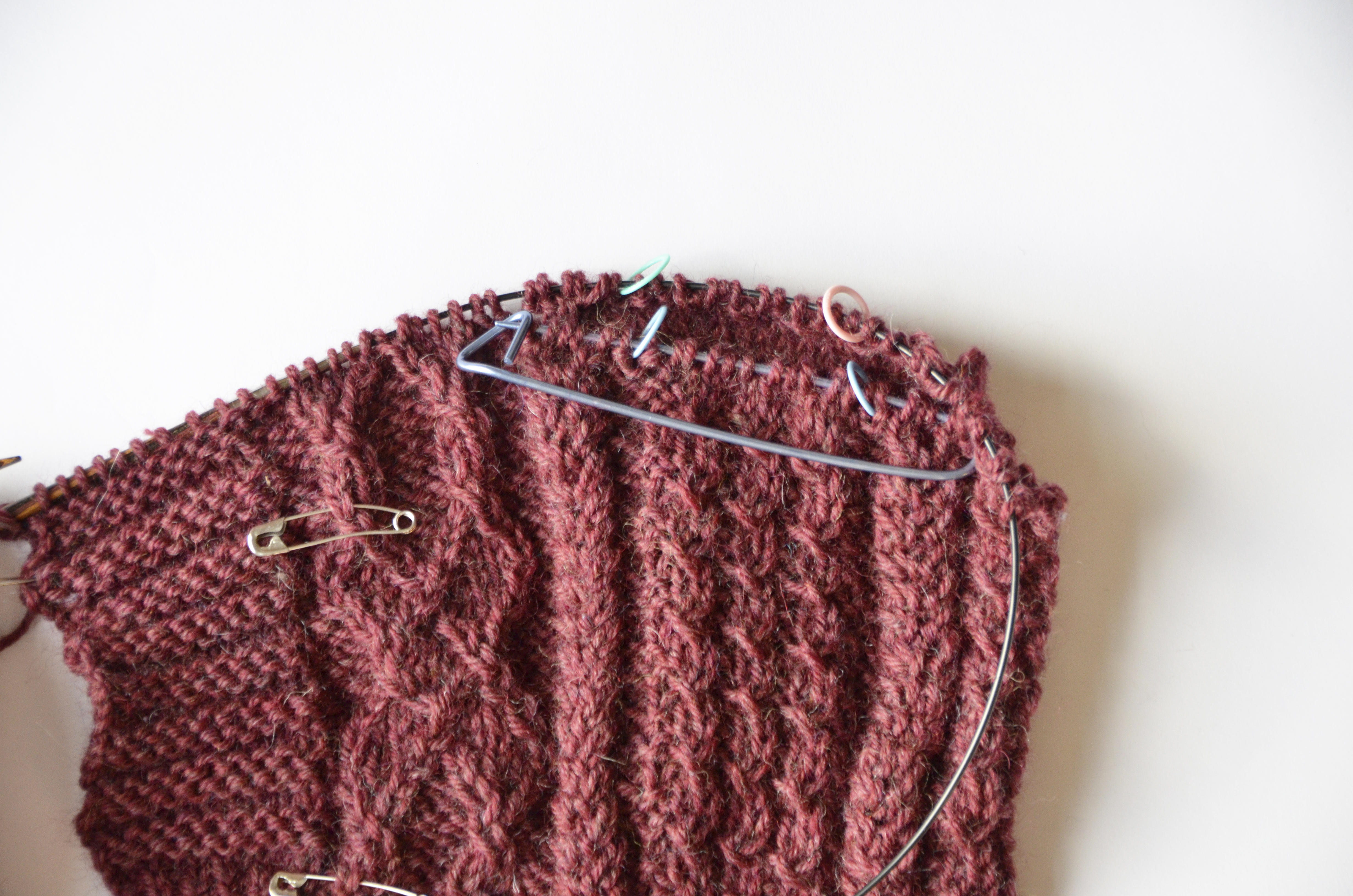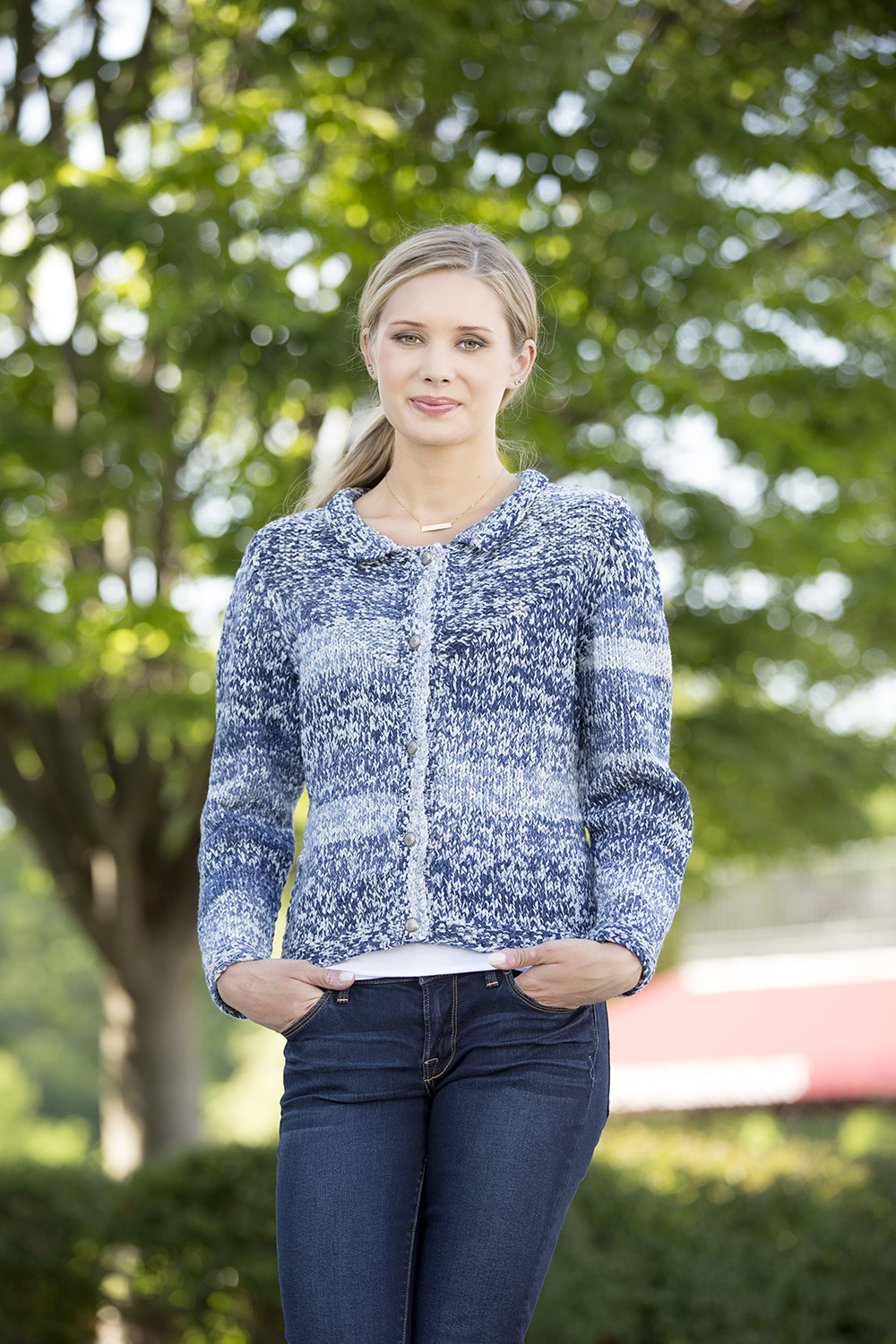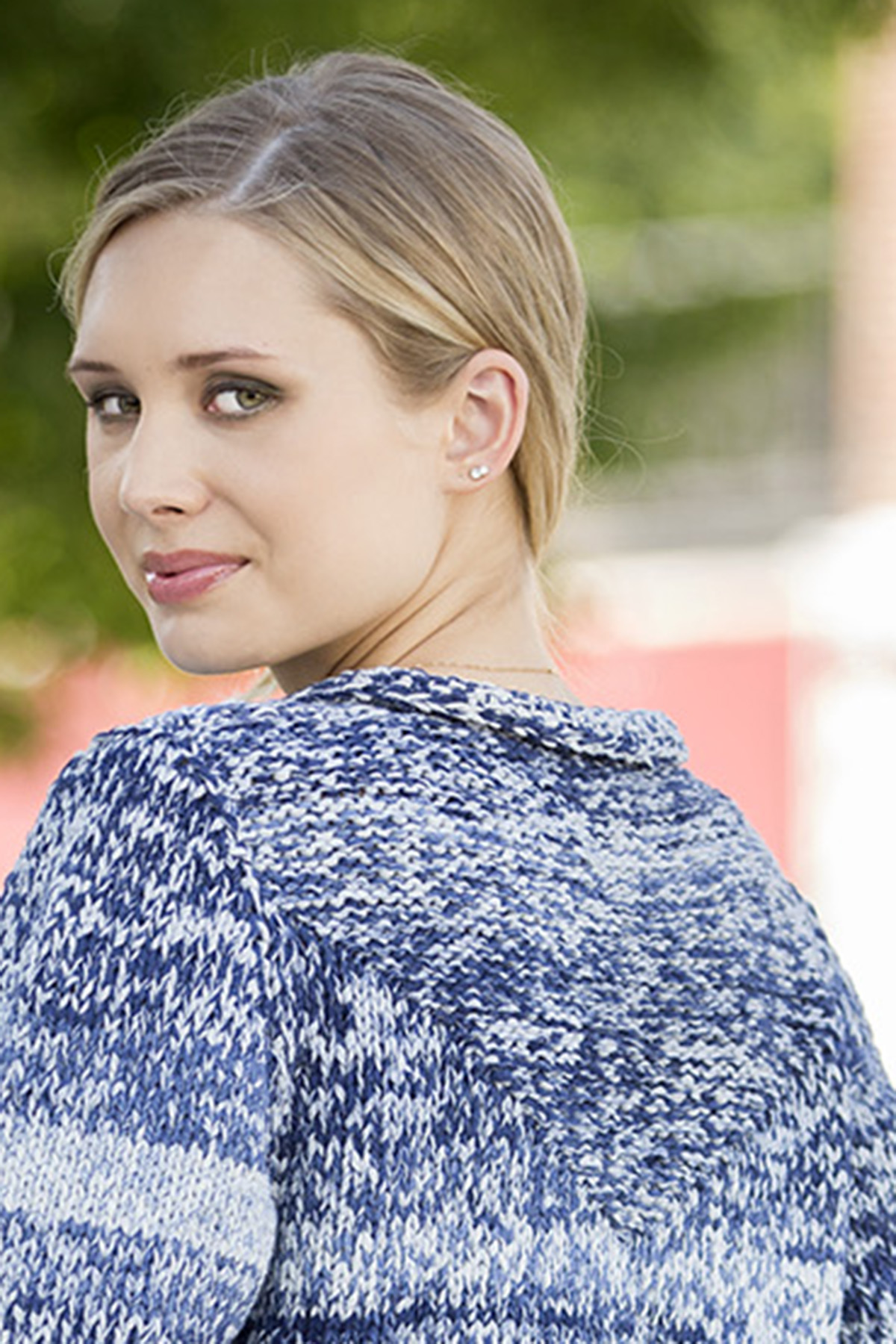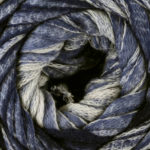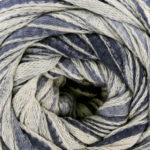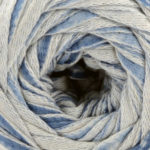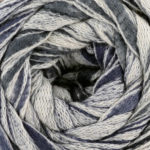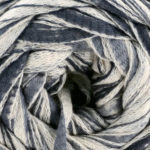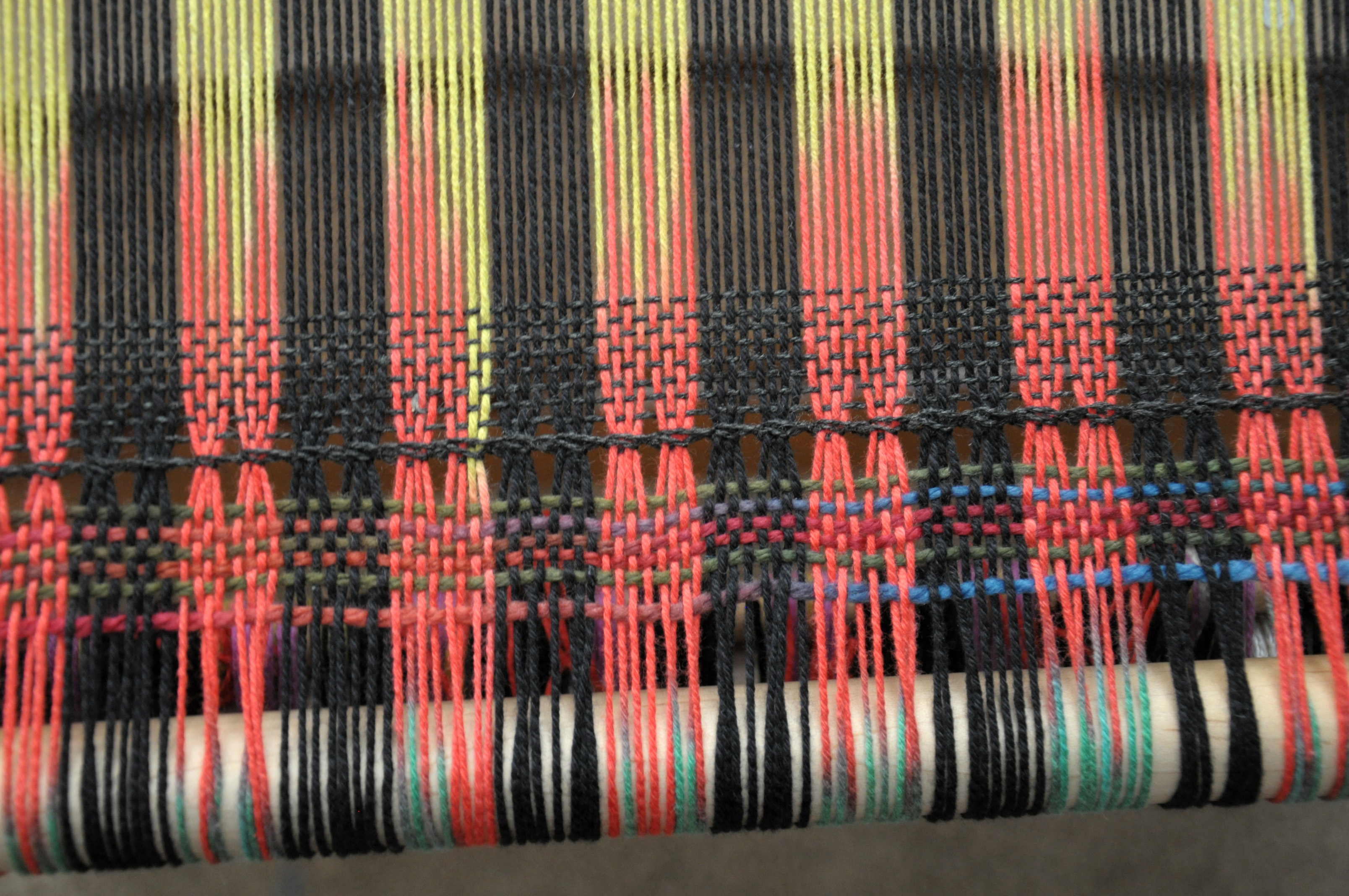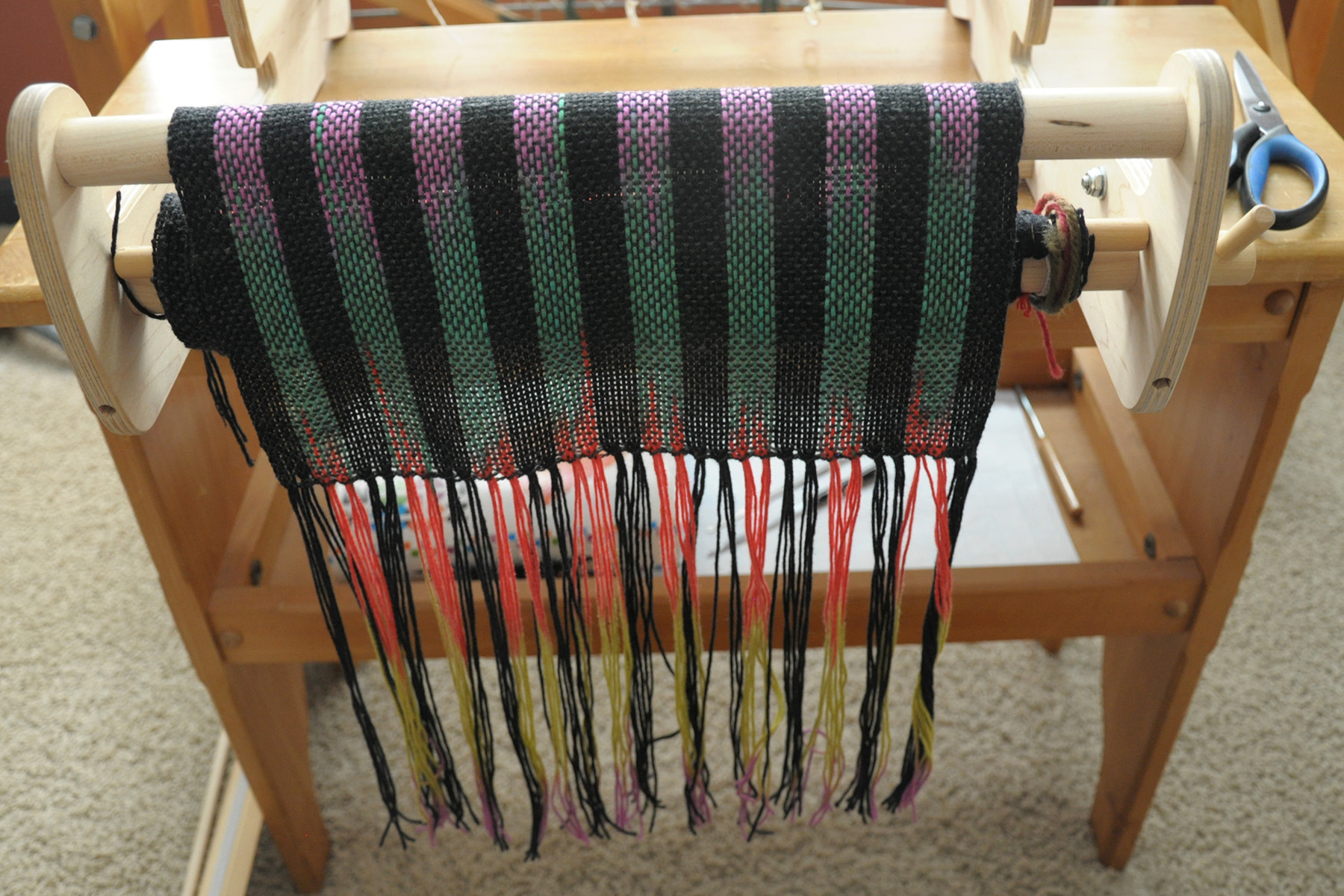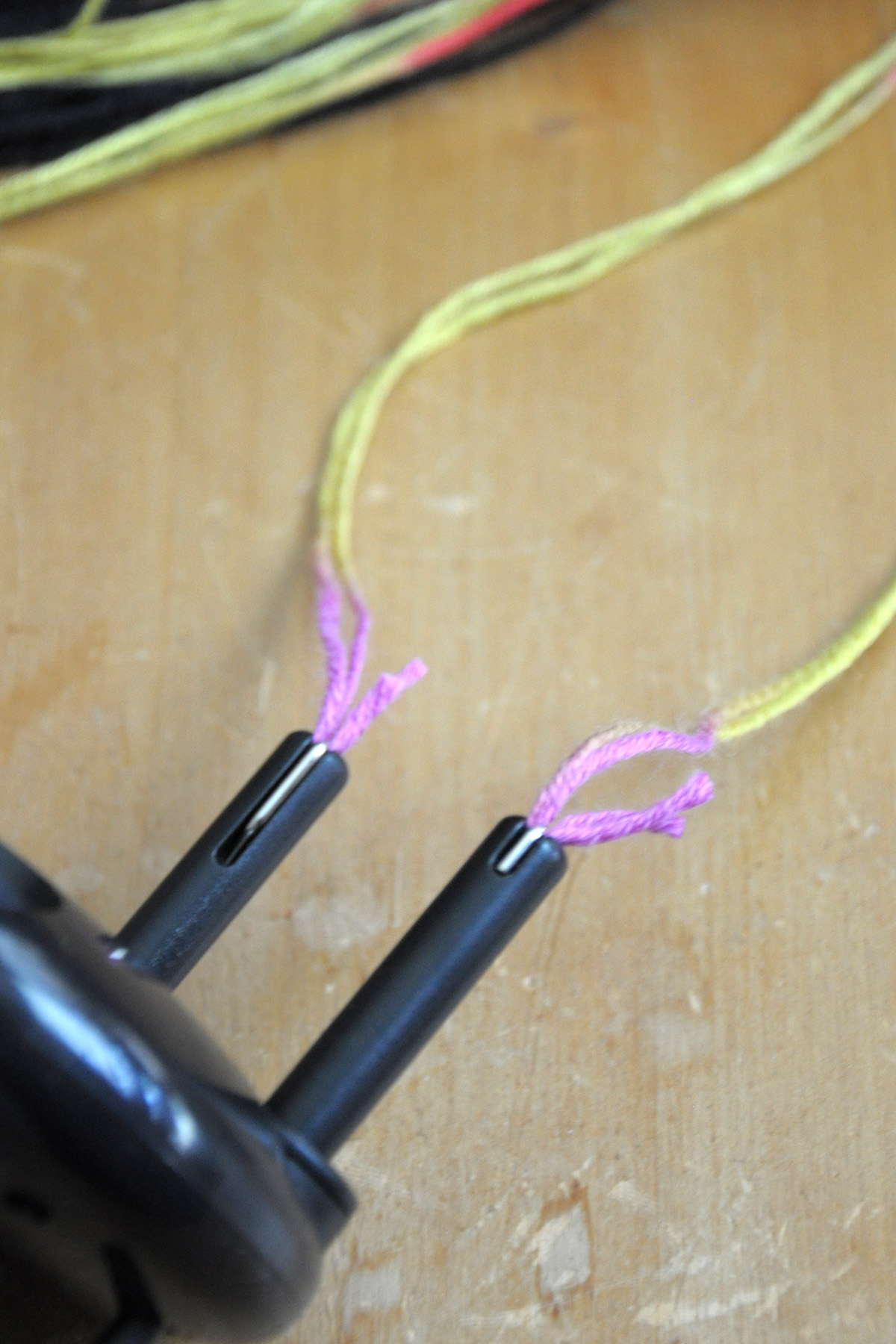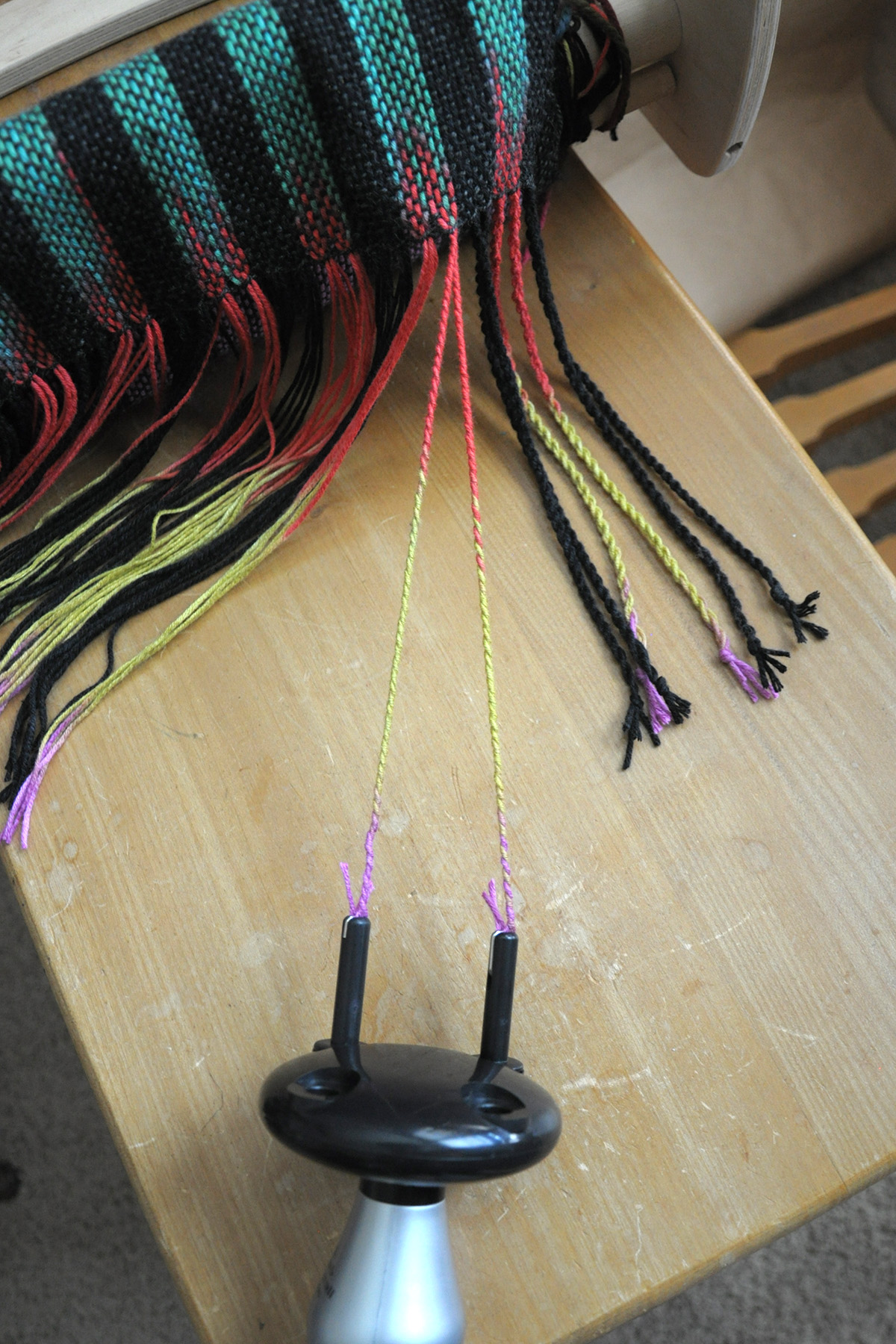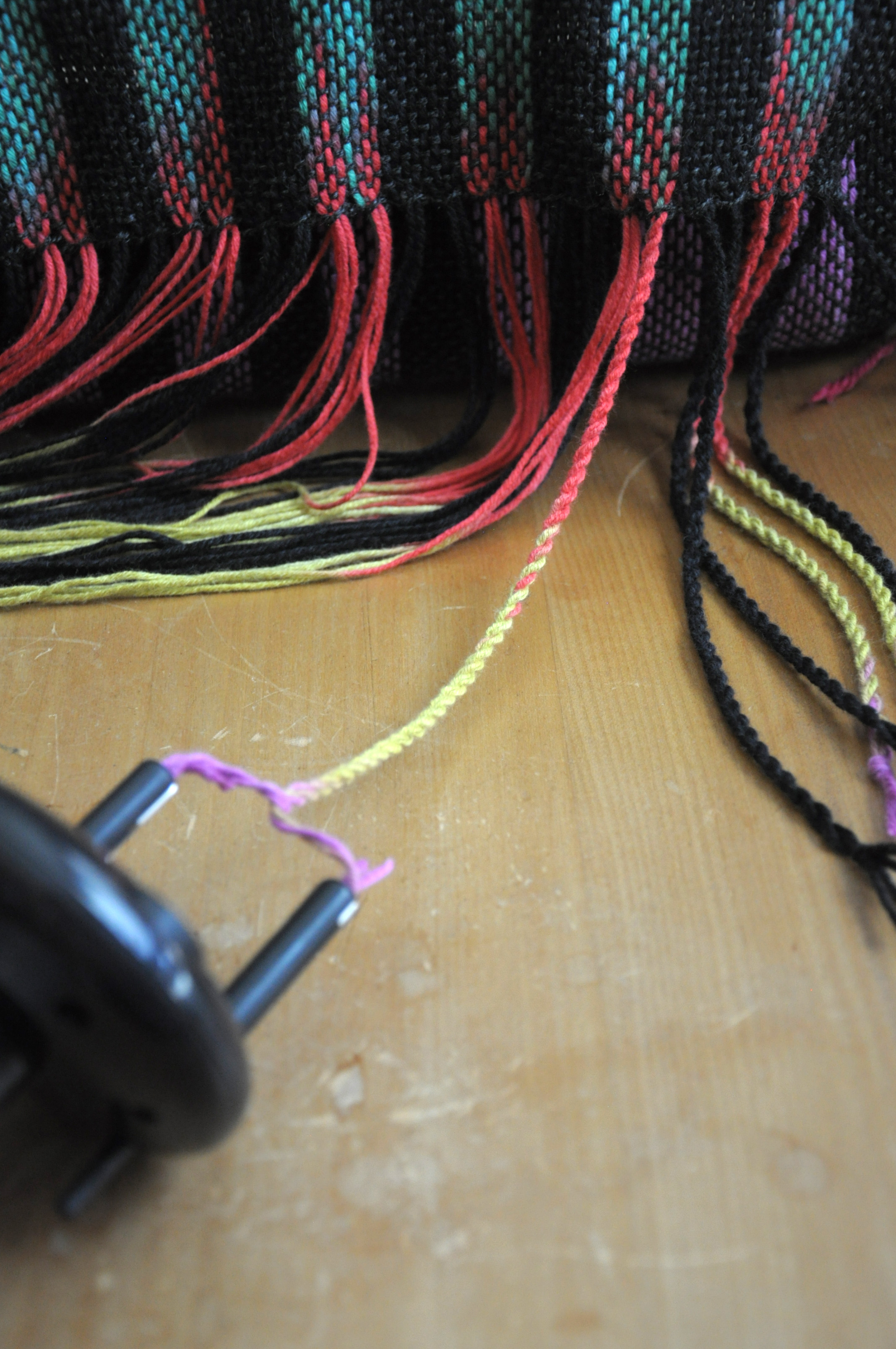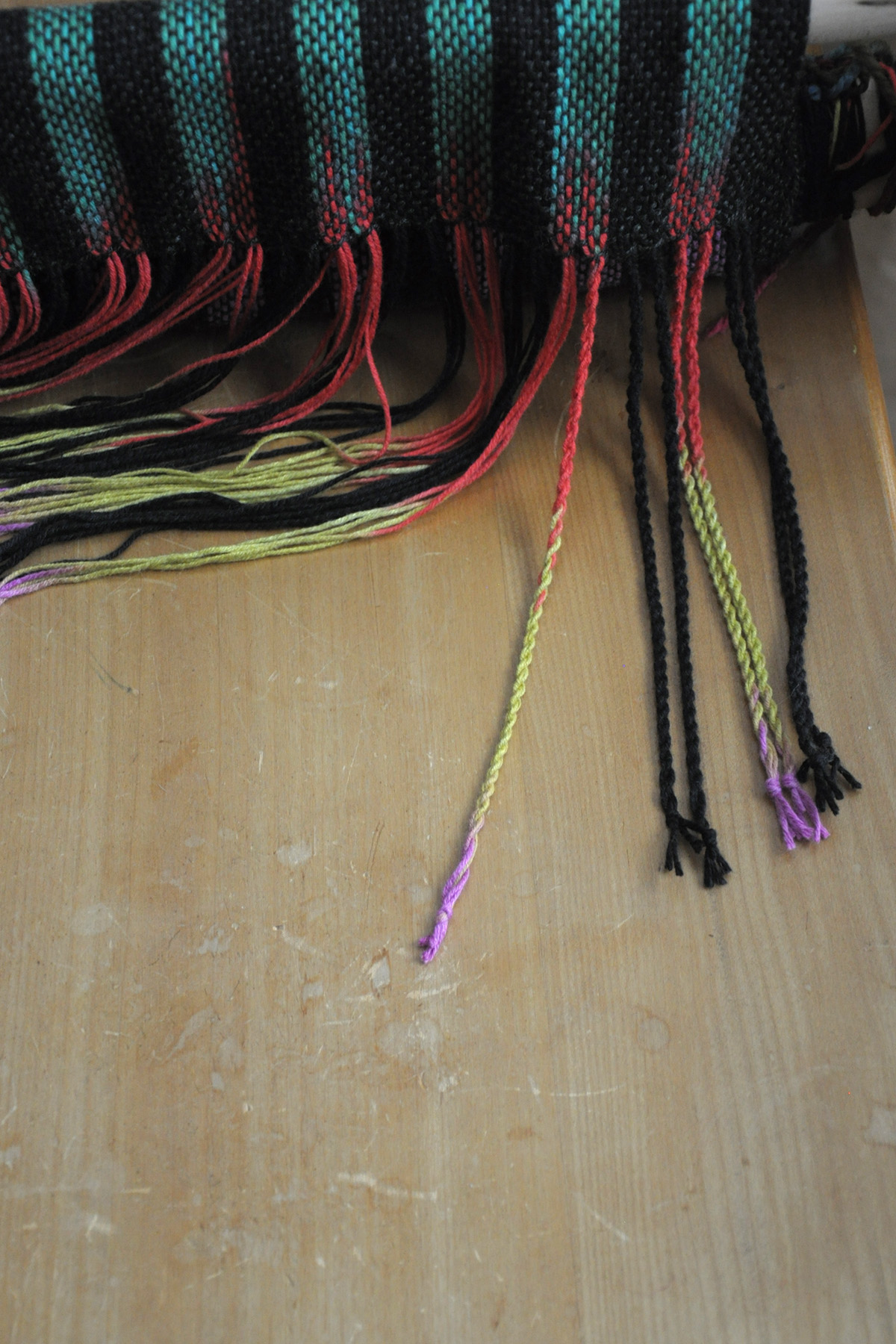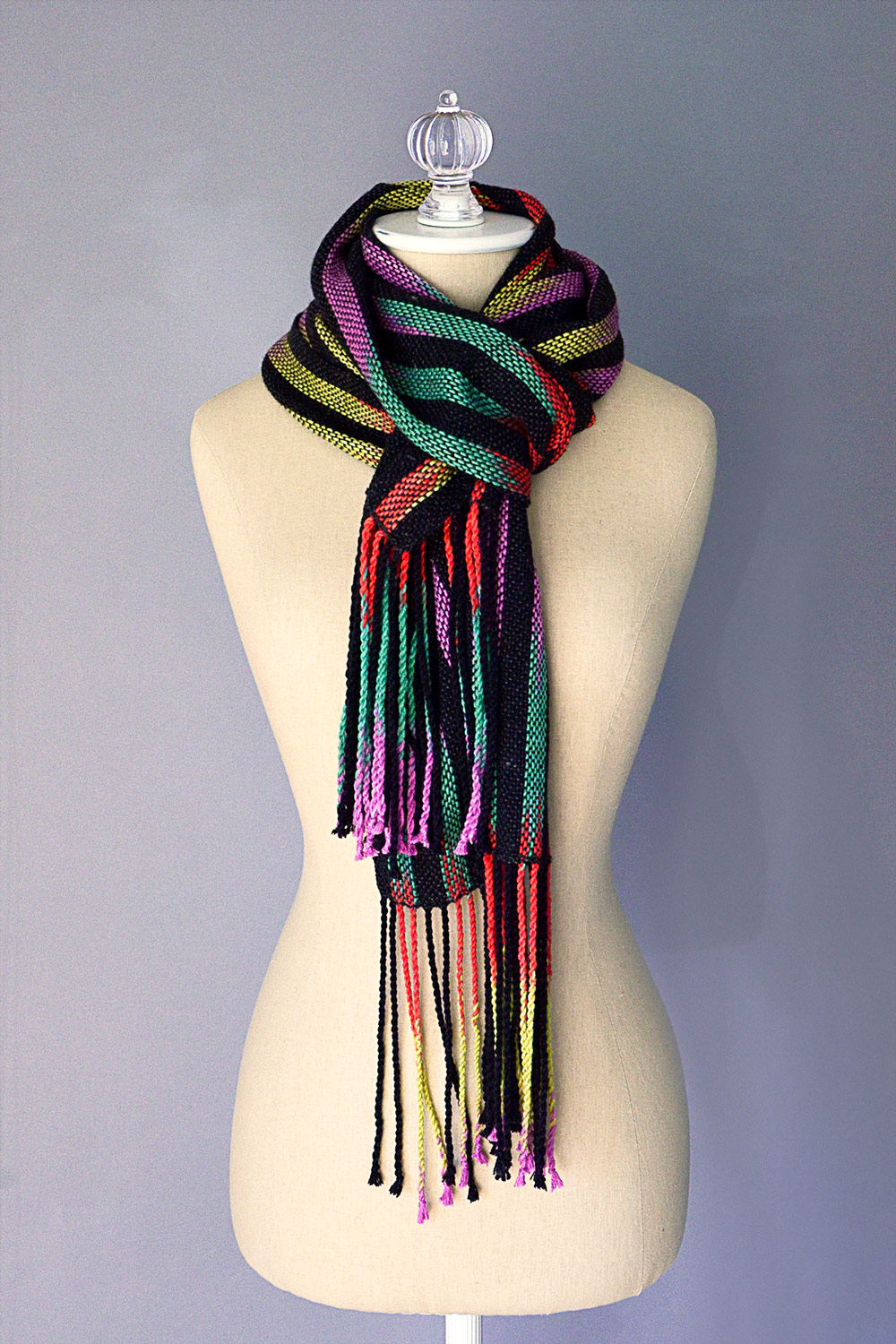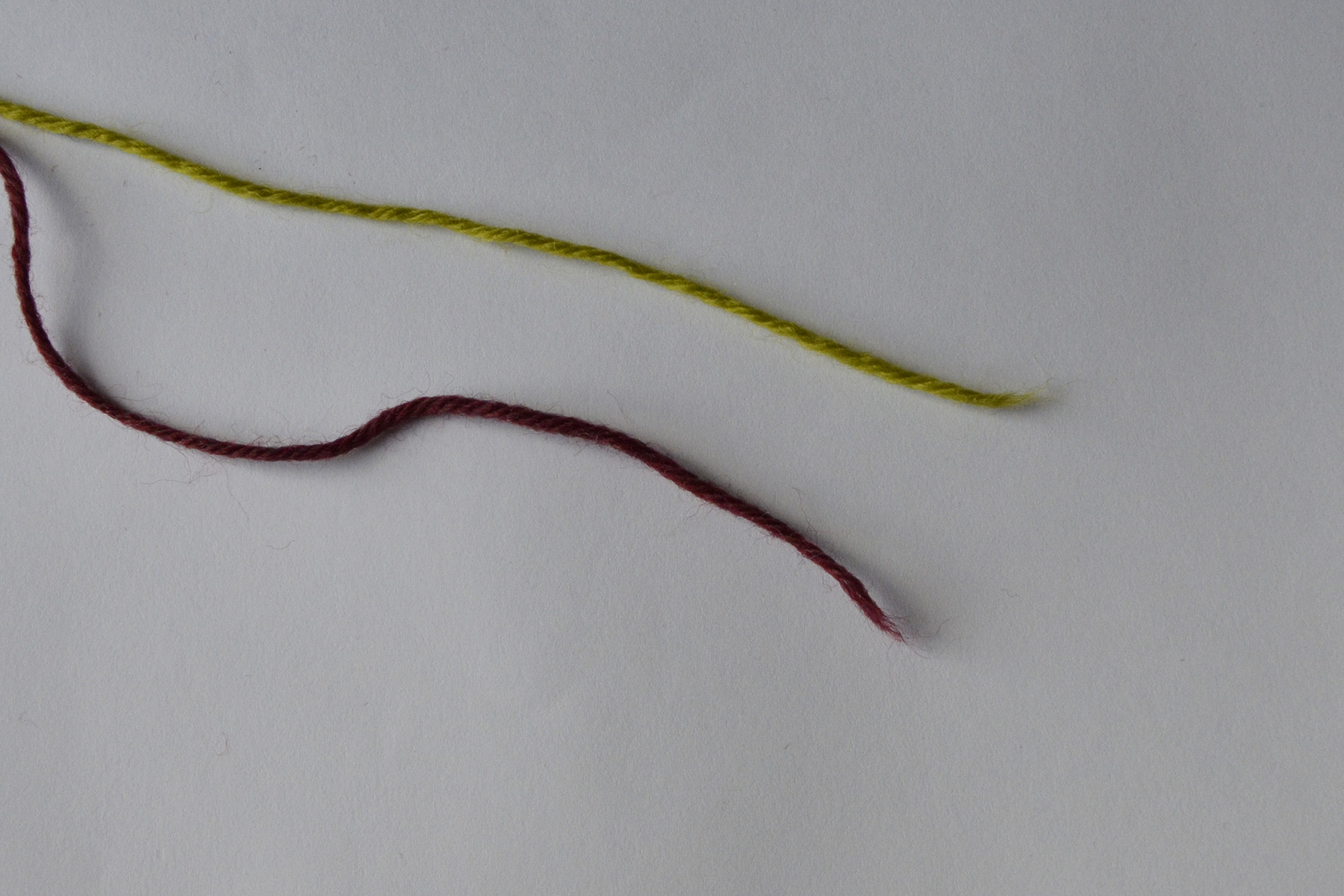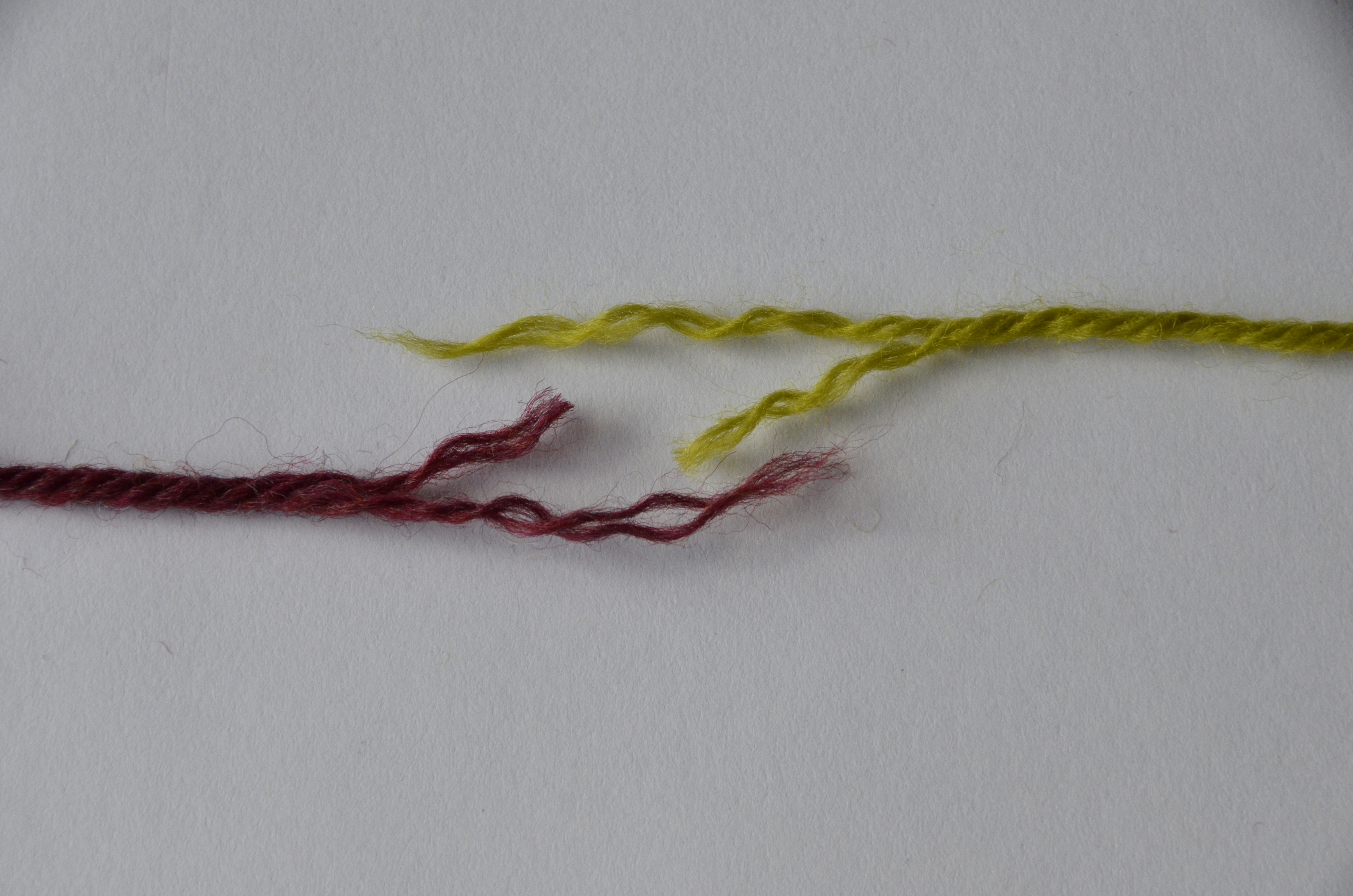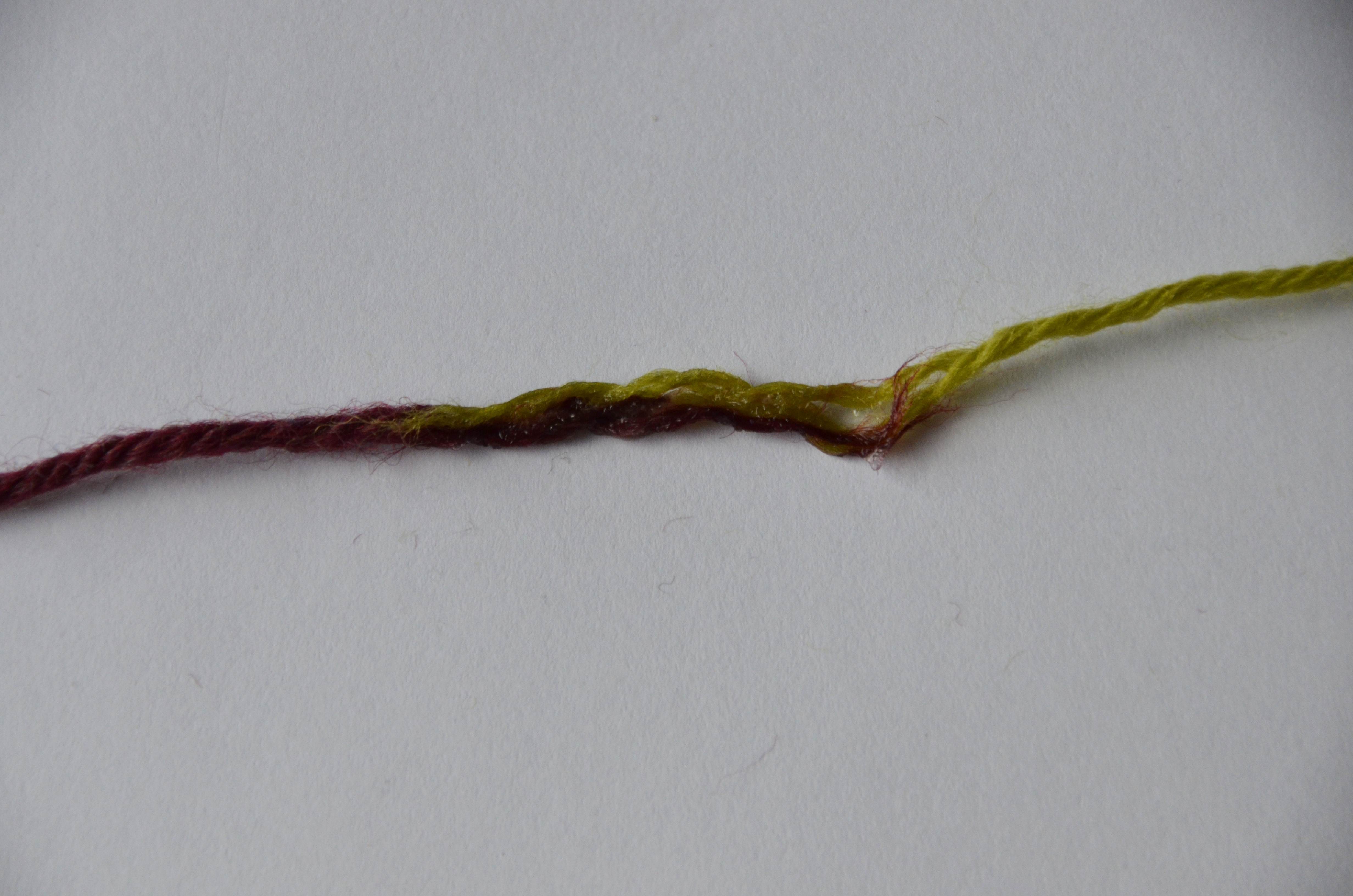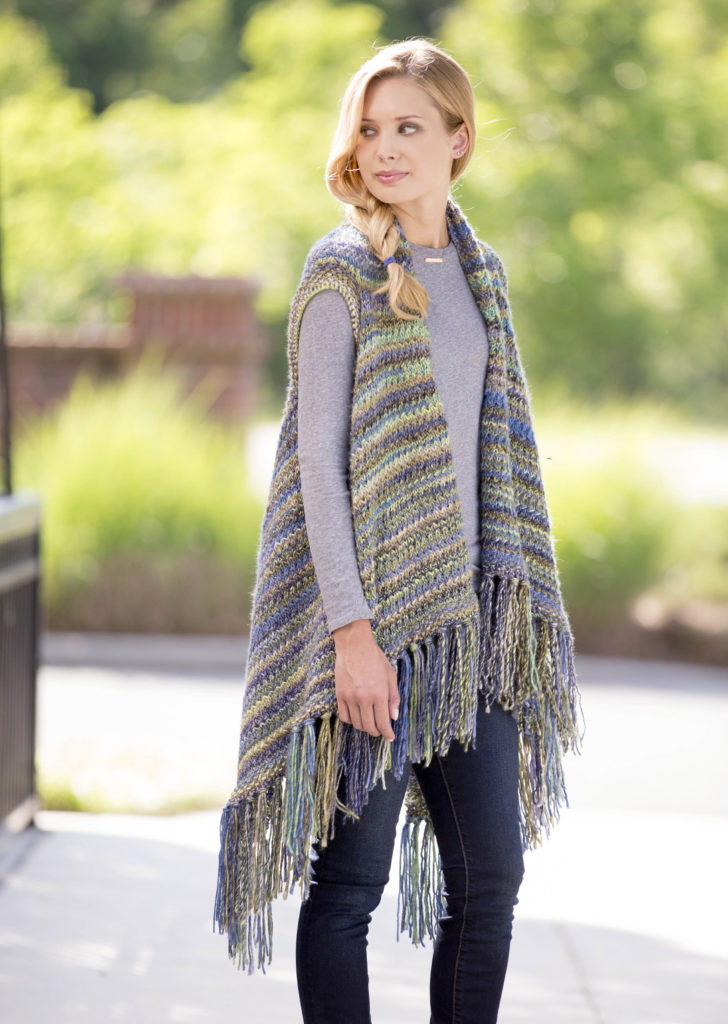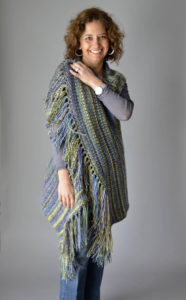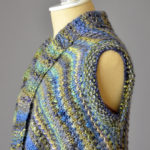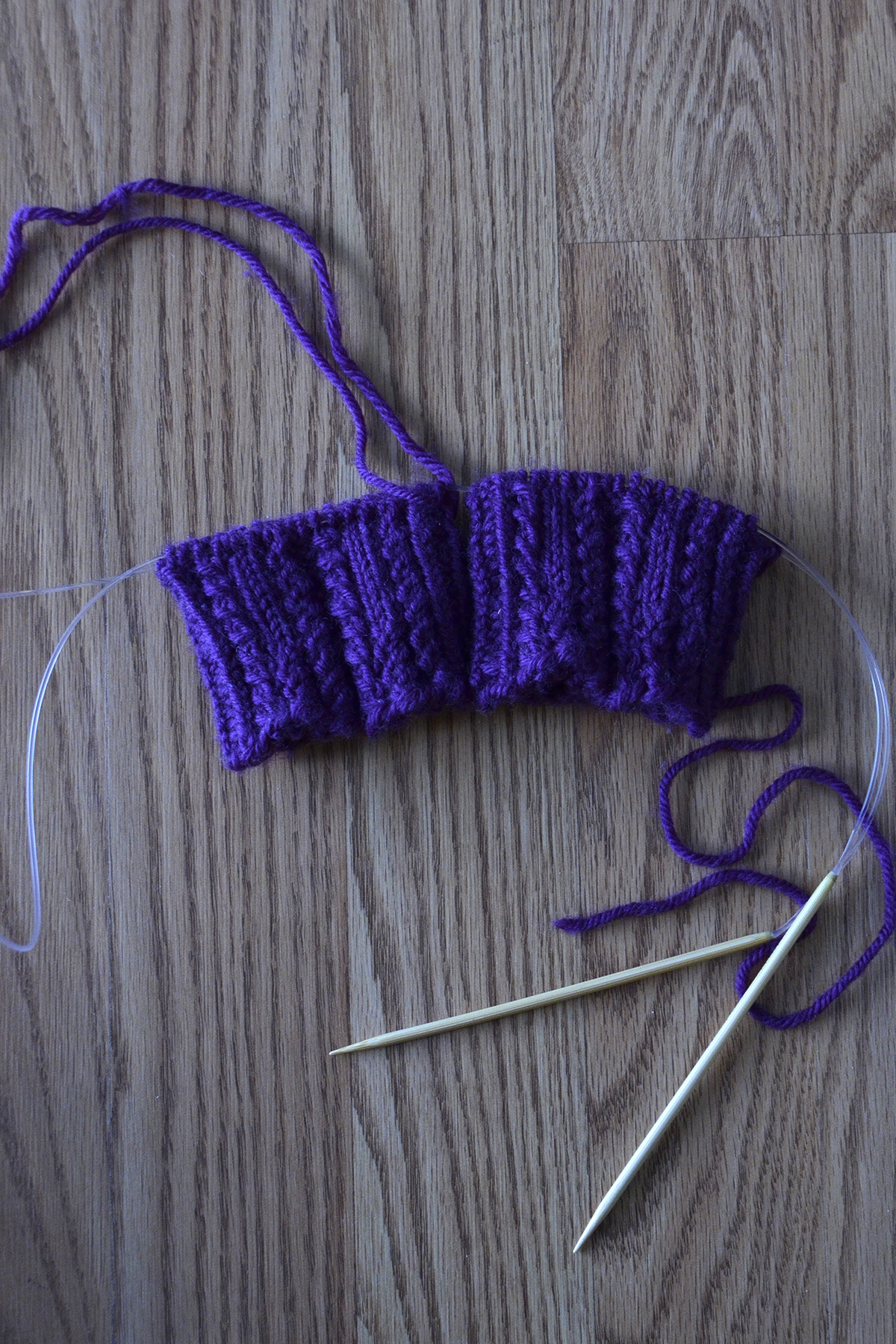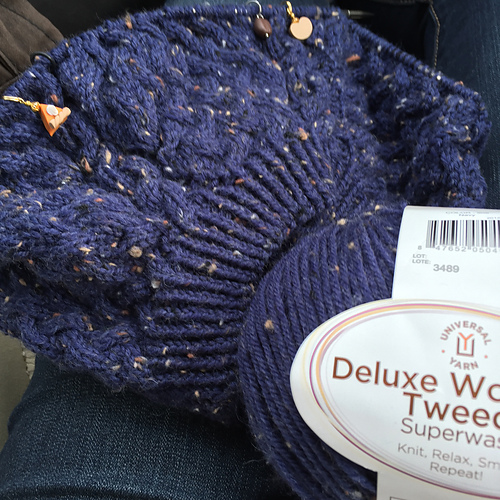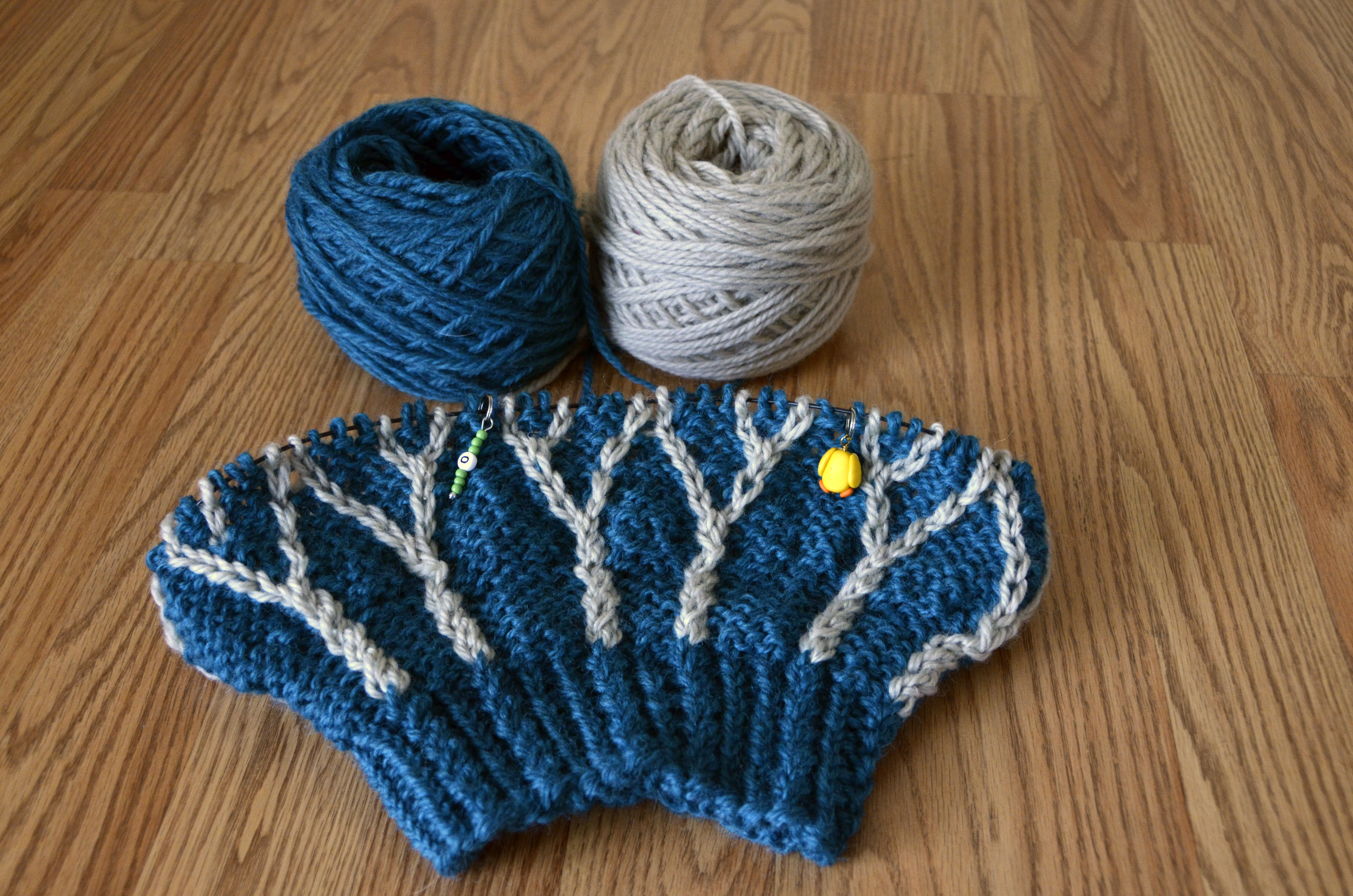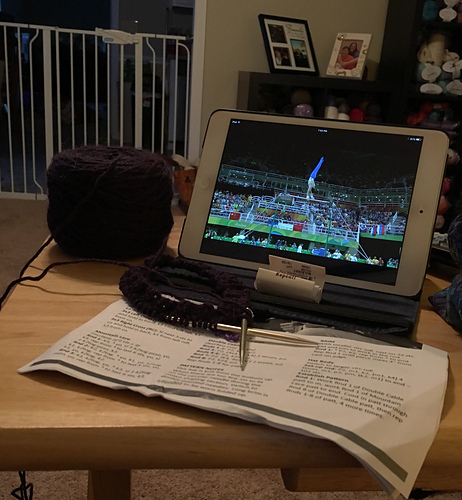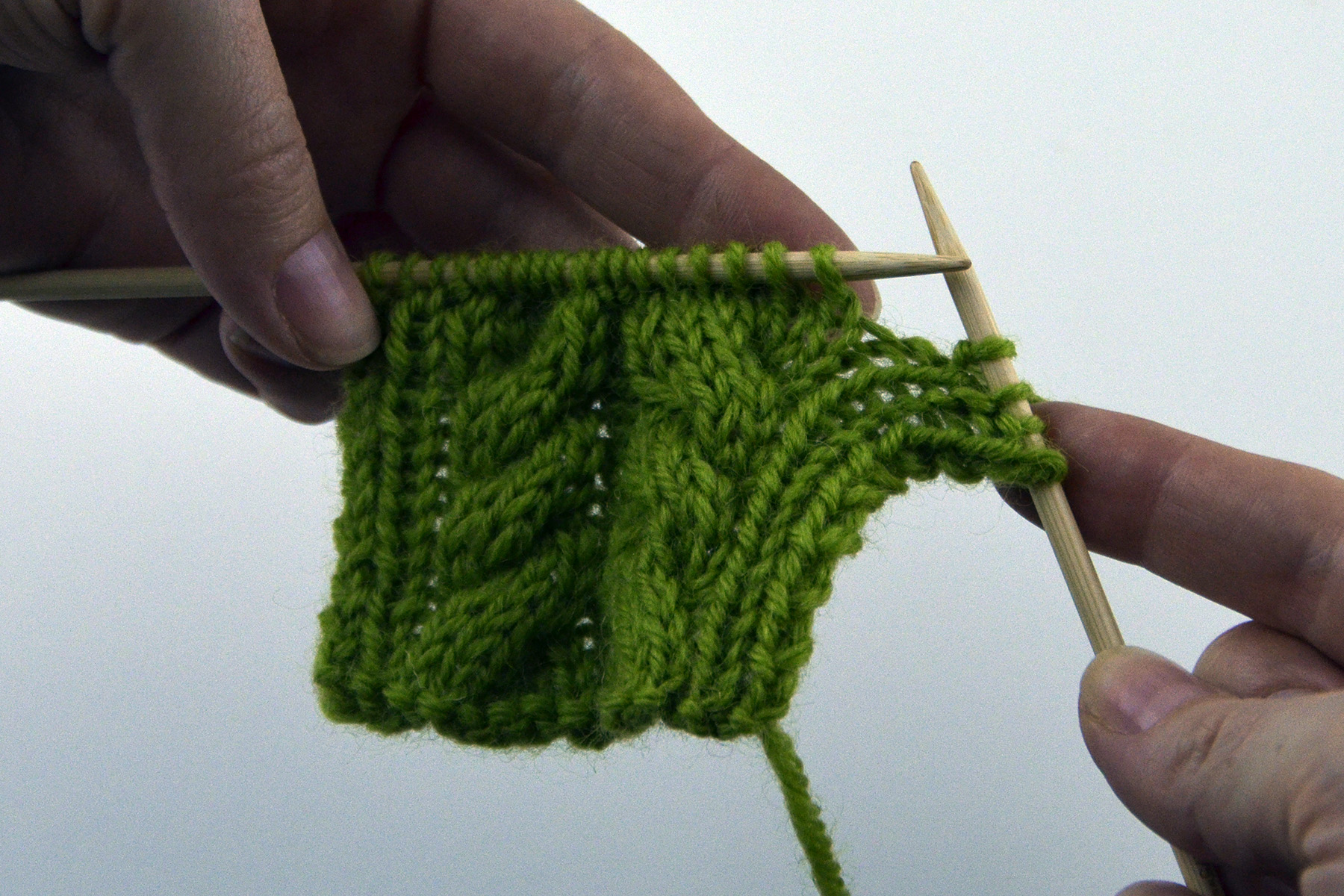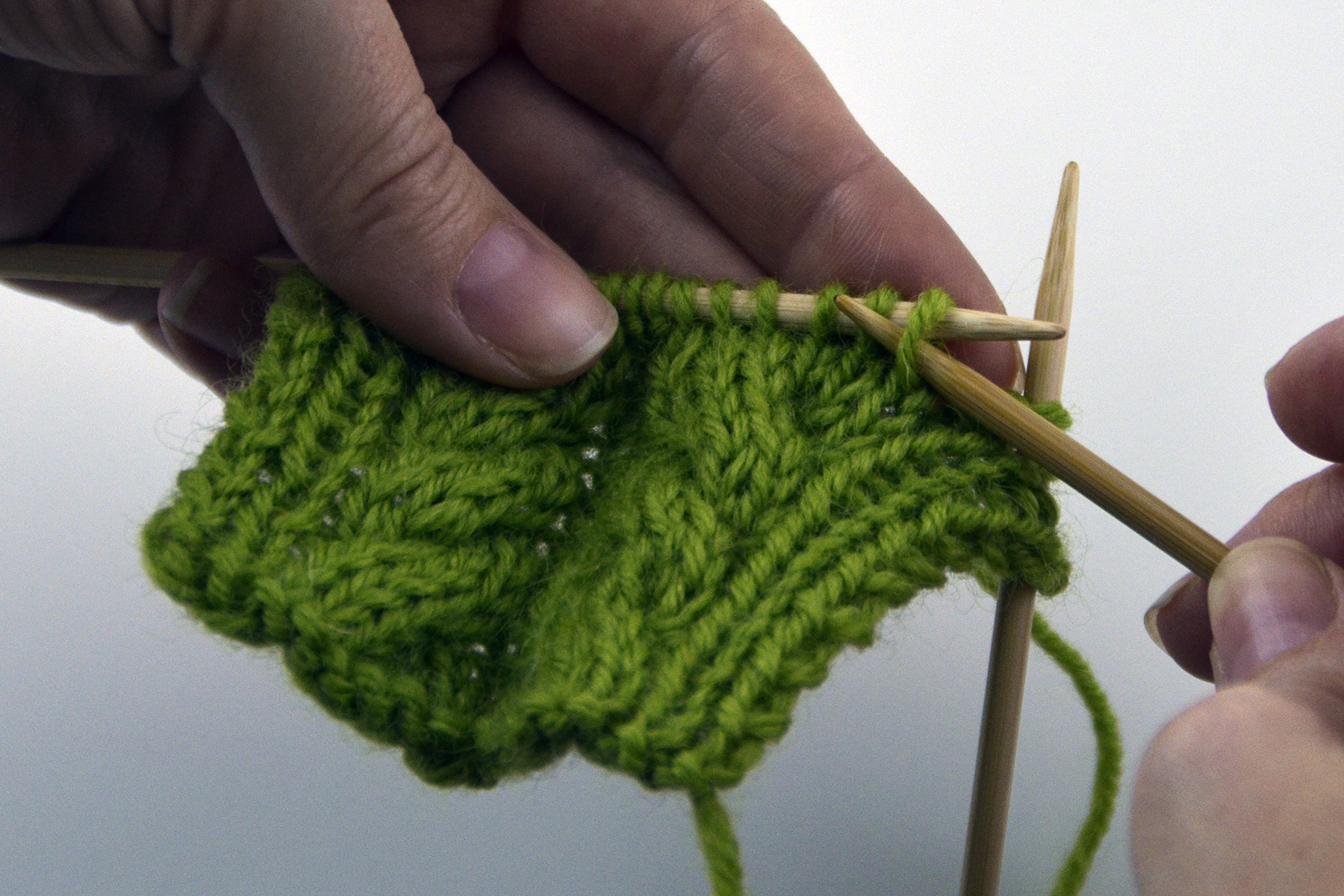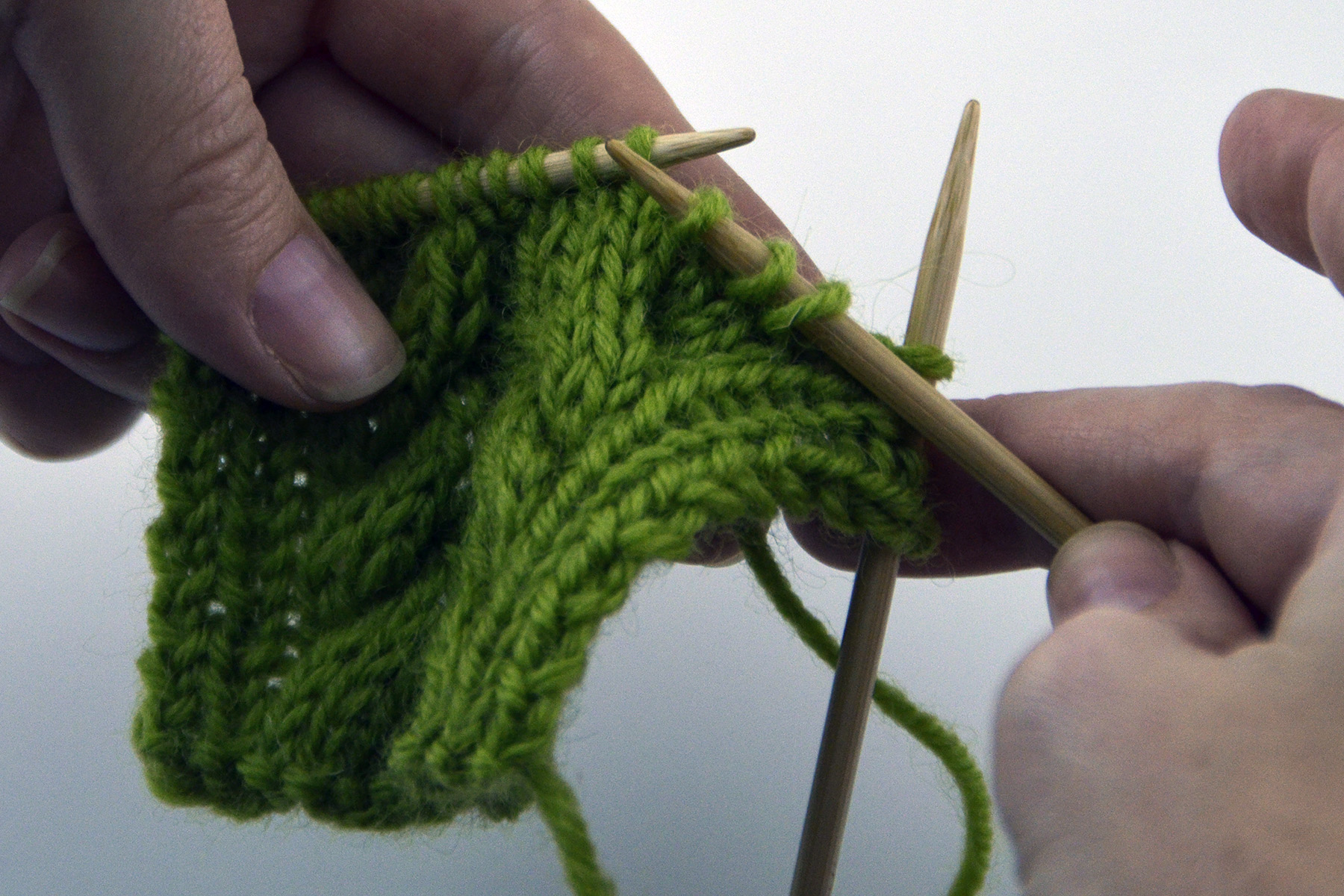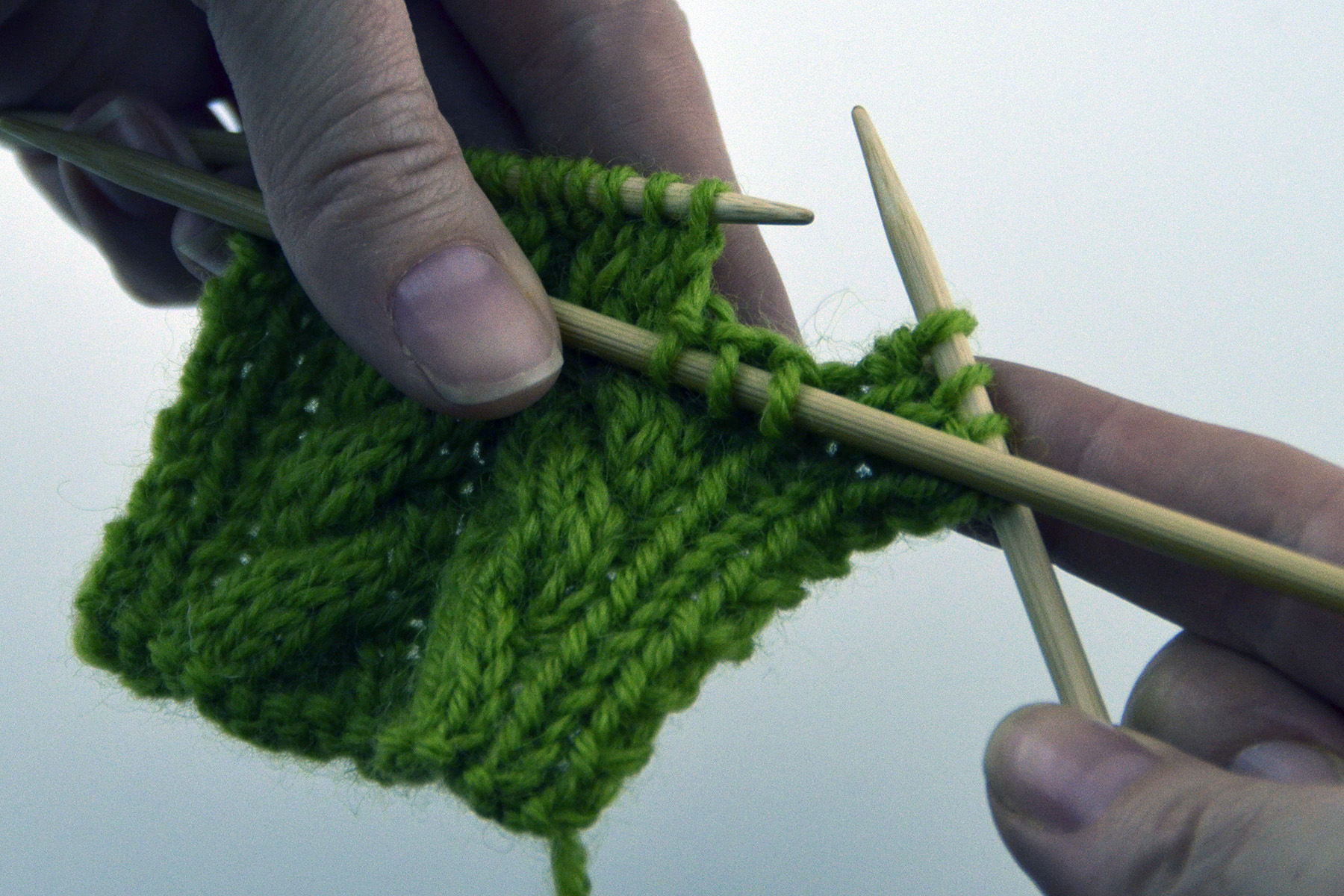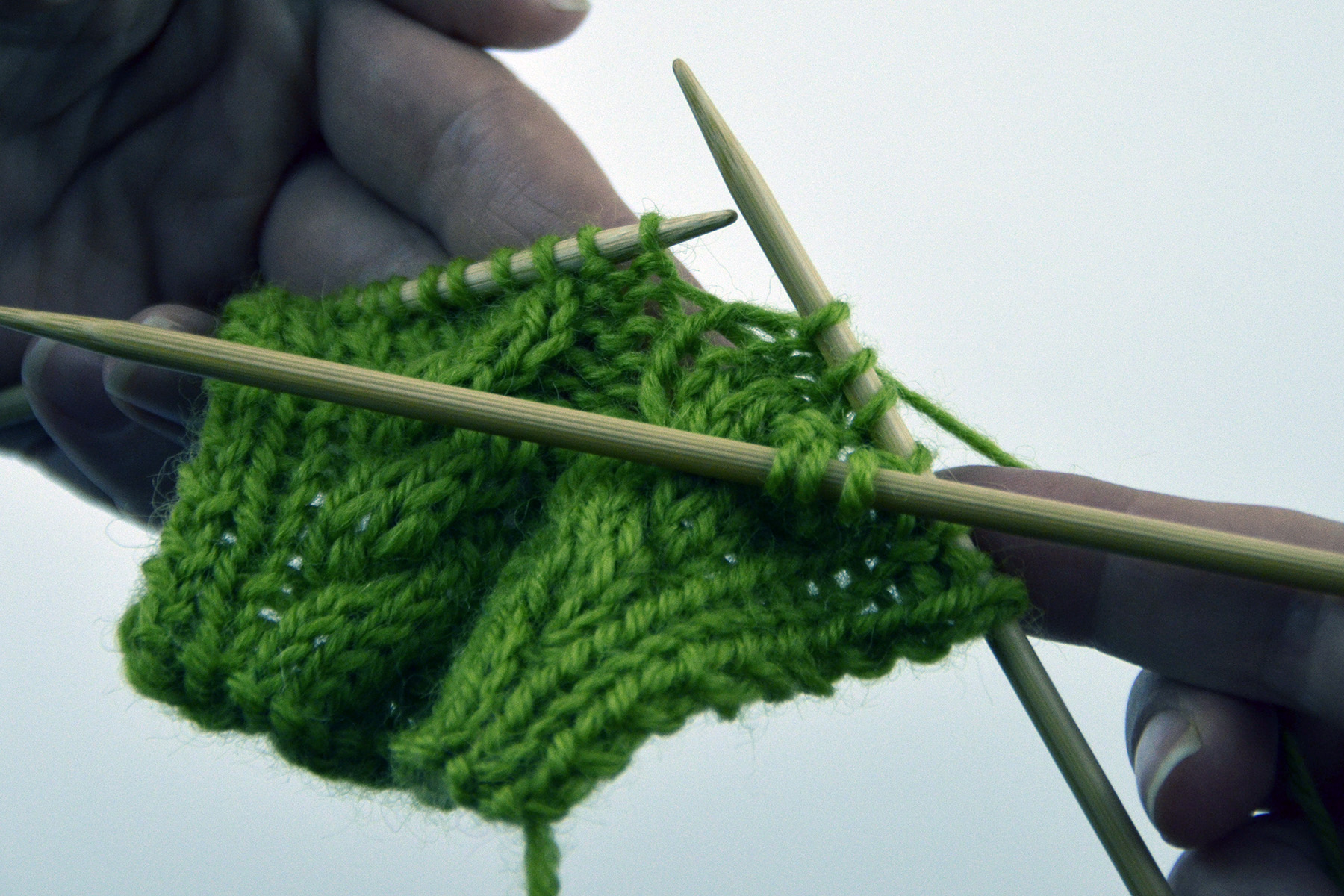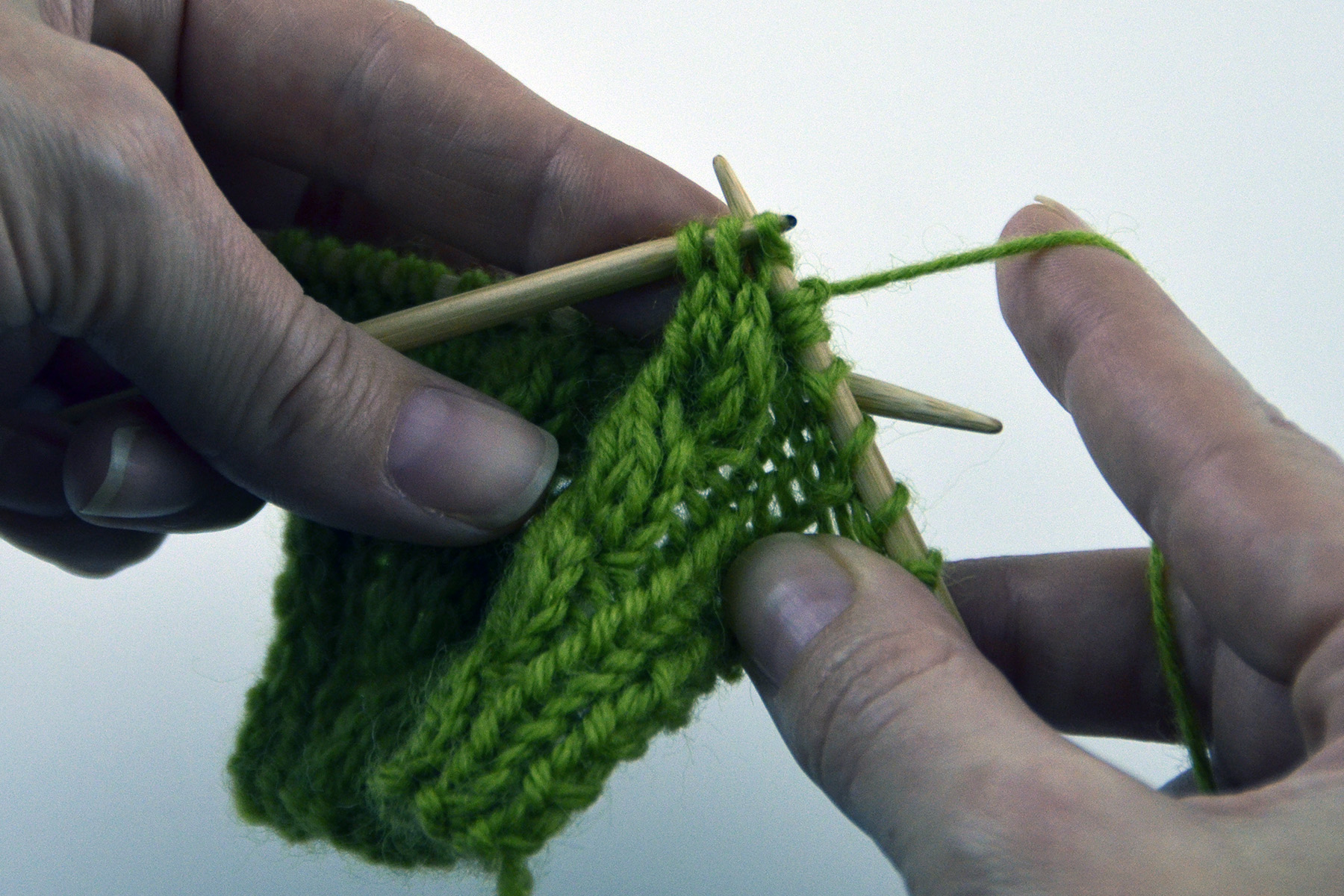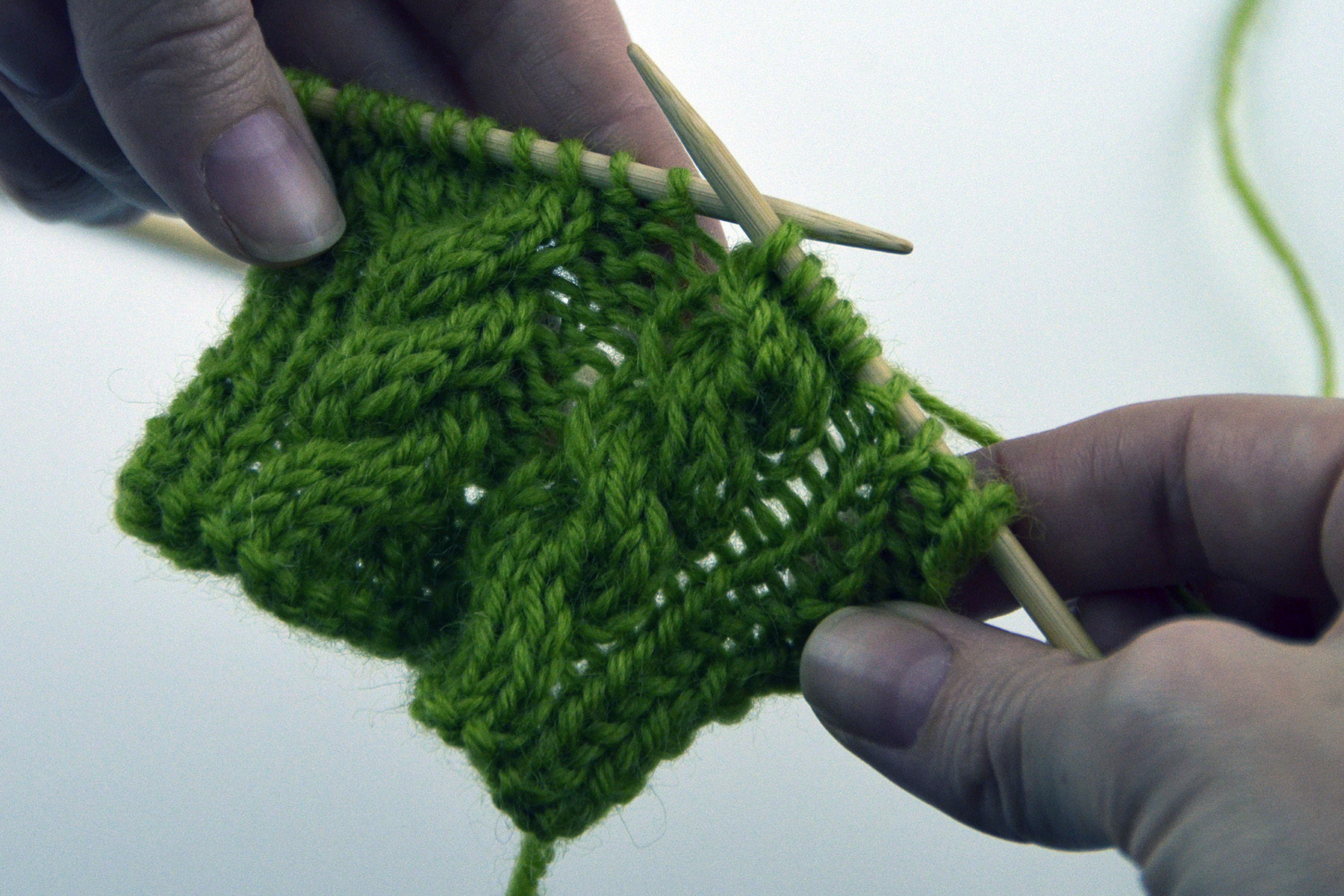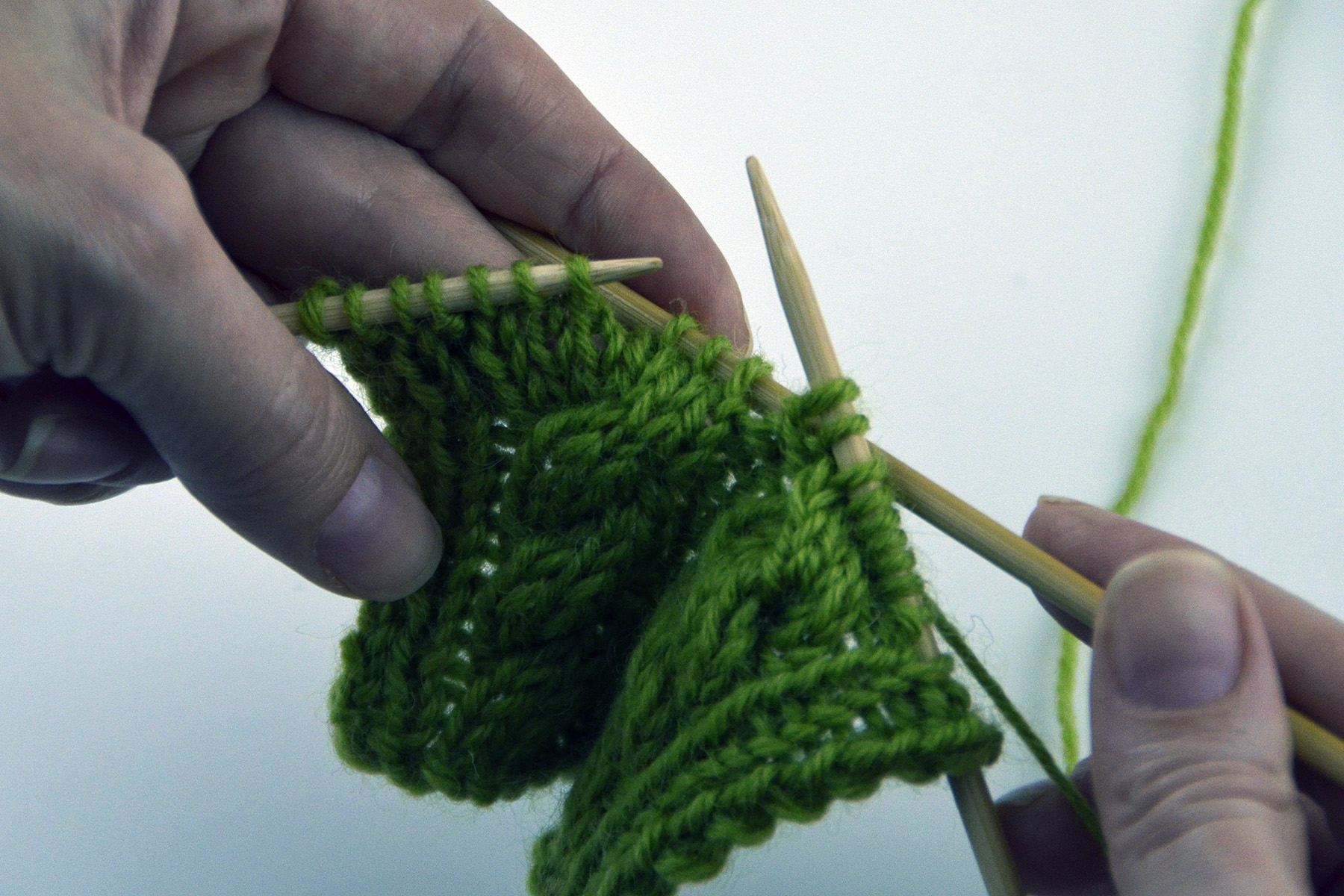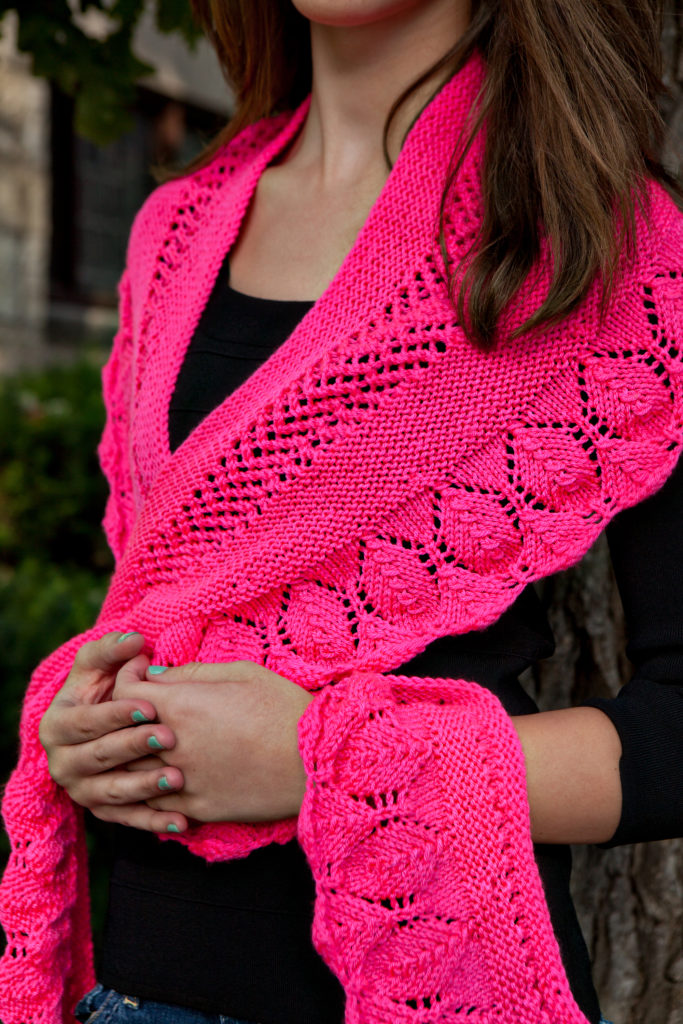Our Deluxe Cable Collection Knitalong has been going strong for about 3 weeks now. If you’ve been thinking about joining, you can begin by reading through some of the blog posts here. It’s not too late to start! You can take part in sharing and conversation over on Ravelry in our knitalong group here.
Today I want to cover a technique used in the Catawba River Poncho, the 3 needle bind-off. In this pattern, it is used to join the shoulder seams of the front and back pieces.
Here is my front piece of the poncho. My neck stitches have been bound-off already, and my shoulder stitches are sitting on the needle.
And here are my front and back pieces with shoulders touching. They’re ready to become one!
To begin, place the pieces with right sides together. You can see that I left my yarn attached to one of my pieces – one less end to weave in later!
It’s important for each shoulder to be on a needle. I’m going to be knitting a stitch from each needle together to join them.
Insert your right needle through the first stitch on the front needle, then through the first stitch on the back needle. Here, I’m just using the needle from the other end of one of my working circular needles. But if you find this awkward, you could use a spare double point or straight needle.
Step 1: Knit the 2 stitches together and slip to the right needle.
Step 2: Knit the next 2 stitches together and slip to your right needle – you now have 2 stitches on your right needle.
Step 3: Bind off 1 stitch by passing the first stitch on the right needle over the second stitch.
Repeat steps 1-3 for a 3 needle bind-off. Here’s what it looks like after a few stitches have been bound off:
Here is my first shoulder after joining:
Both shoulders:
You can see that this method produces a ridge, which is why it’s typically worked with wrong sides of pieces held together. But every now and then I like to use it as a design element and work it with wrong sides together.
And here’s my shoulder viewed from the right side:
There are a few reasons I love a three needle bind-off. For one, I don’t have any seams to sew. I don’t really mind sewing seams, but I don’t just totally love doing it, either. I’d always rather be knitting than sewing a seam.
Second, a three needle bind-off makes it easy to line up pattern stitches, such as in the Catawba River Poncho. I could acheive the same look with a mattress stitch seam, but I prefer this method when possible.
Third, I find it easier to get a seam with good tension as opposed to a sewn seam. Oh, and fourth, a 3 needle bind-off makes for a very stable seam. Shoulder seams see a lot of stress. Especially in a piece like this worked in a bulky weight yarn, think about how much stress will be placed on the shoulders as the garment is hanging down from it.
Next time I’ll be back to talk more about this poncho! I’m going to be picking up stitches along the sides for my eyelet ribbing.
Are you knitting along? I would love to hear how you’re doing!
